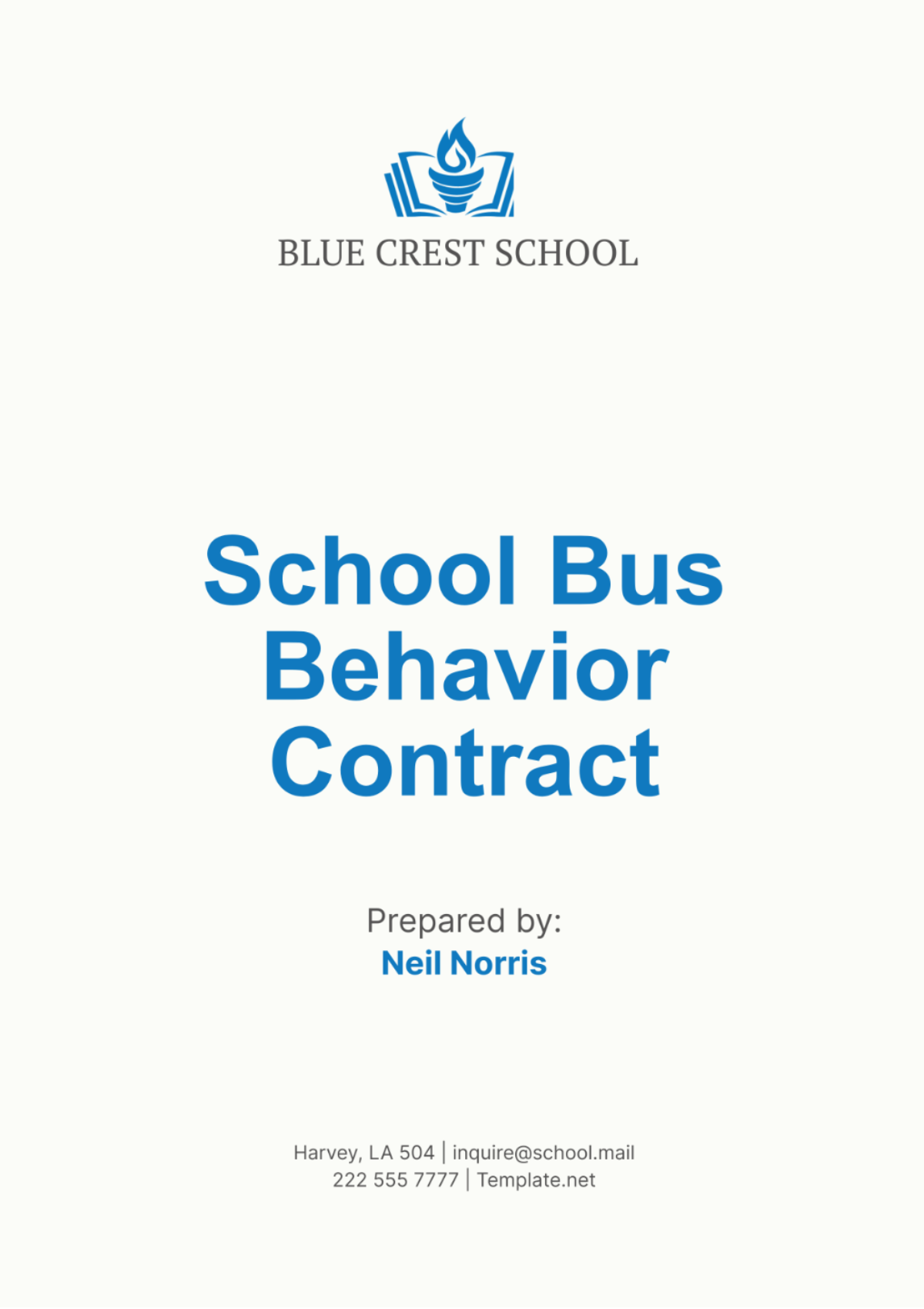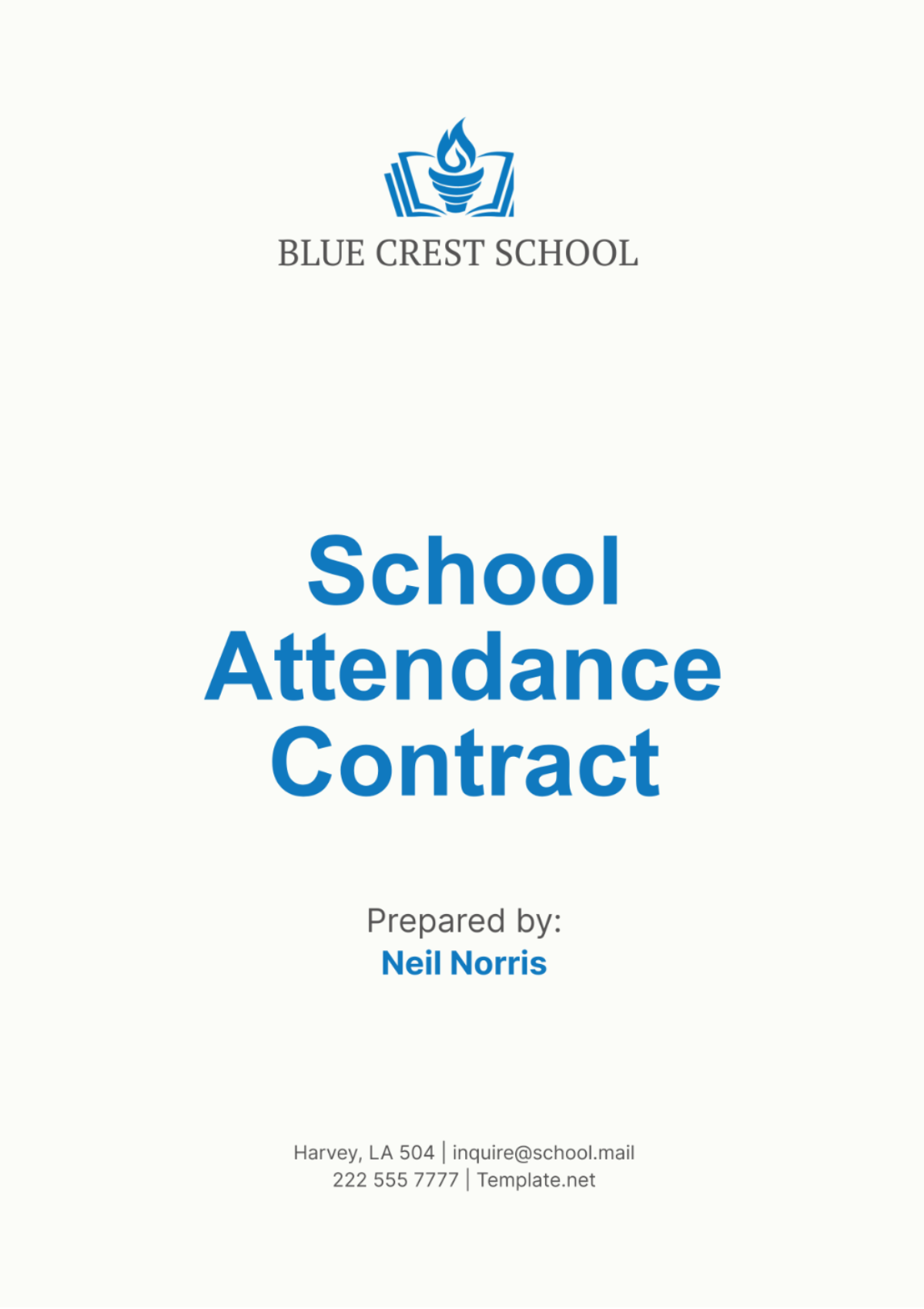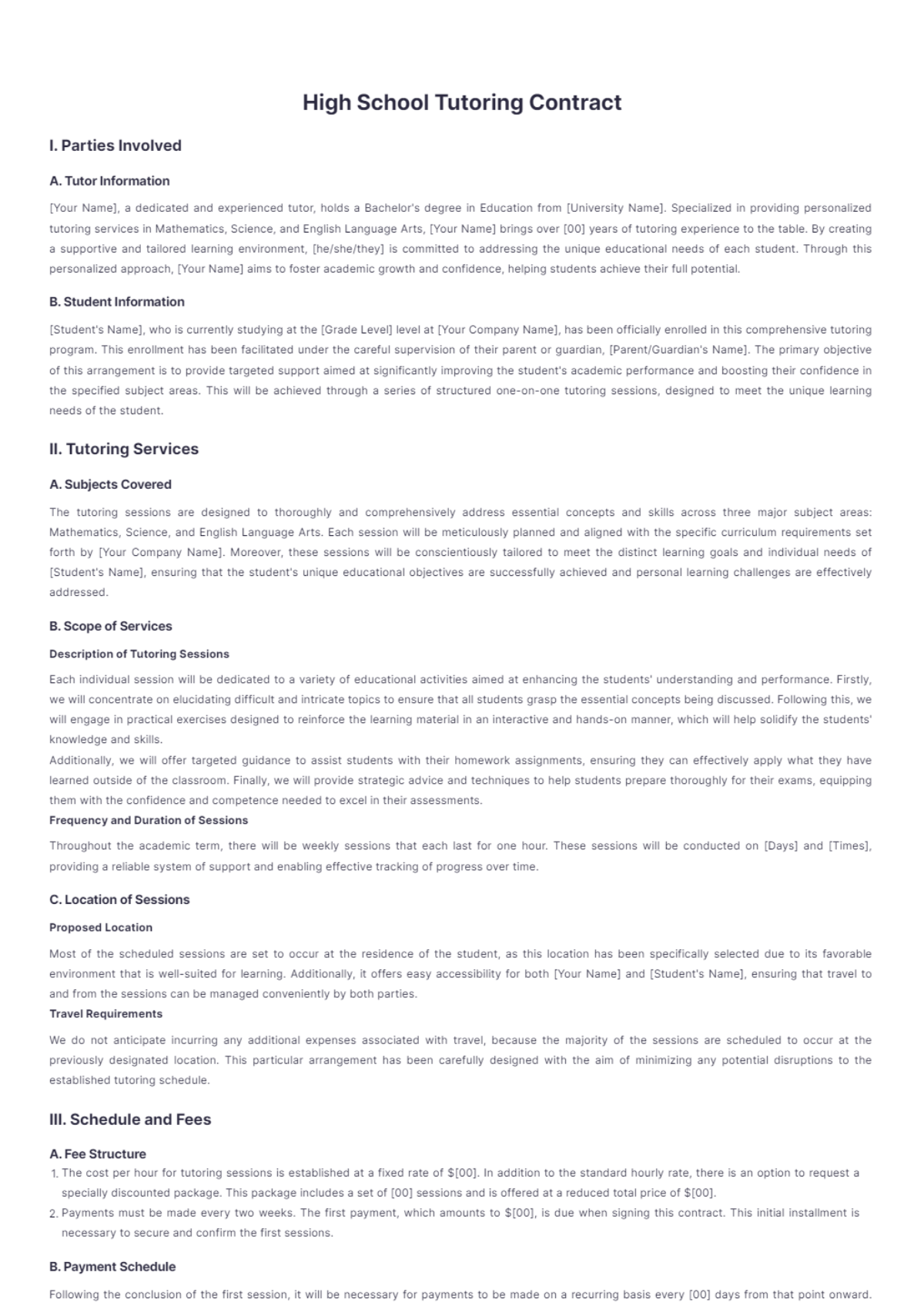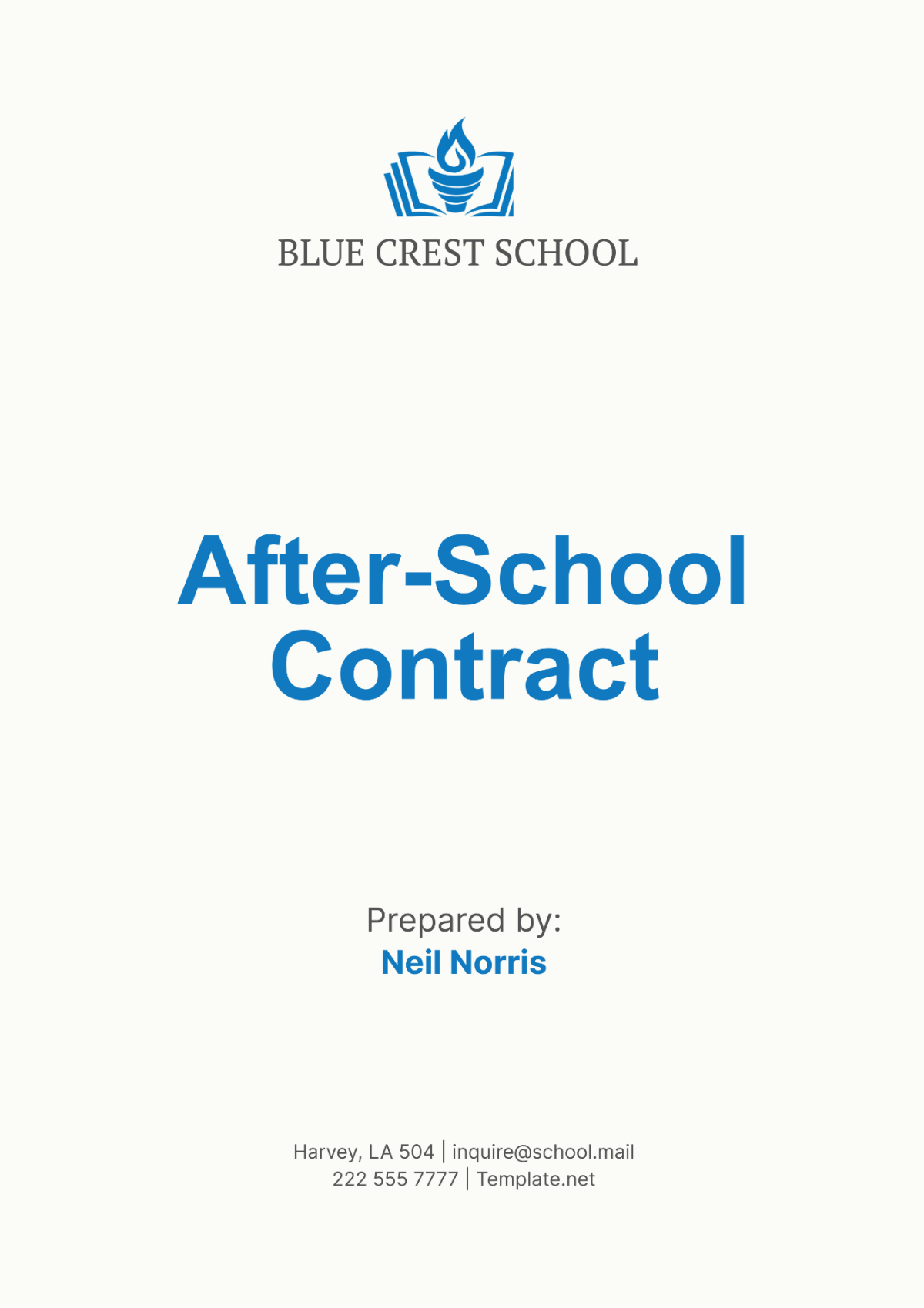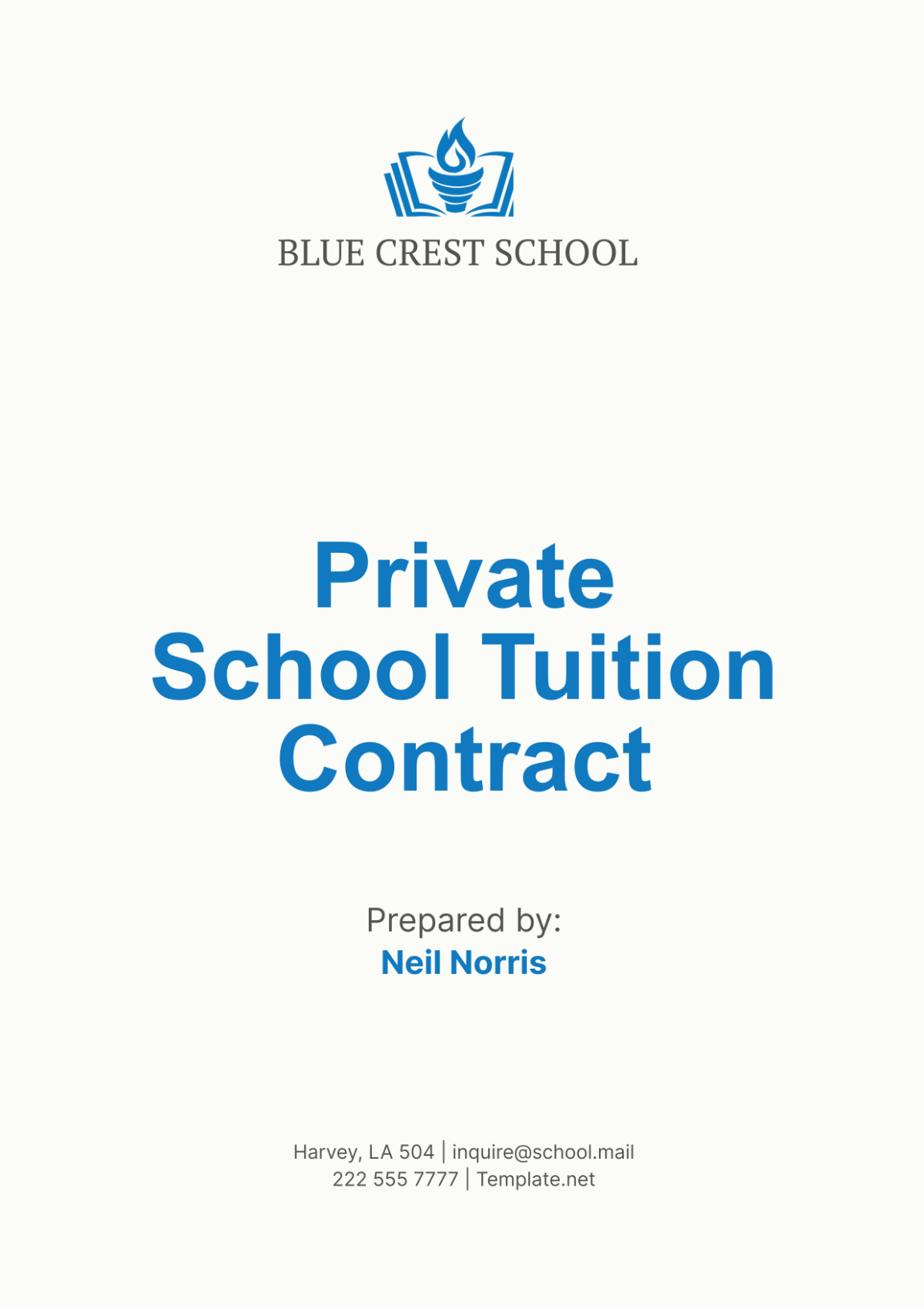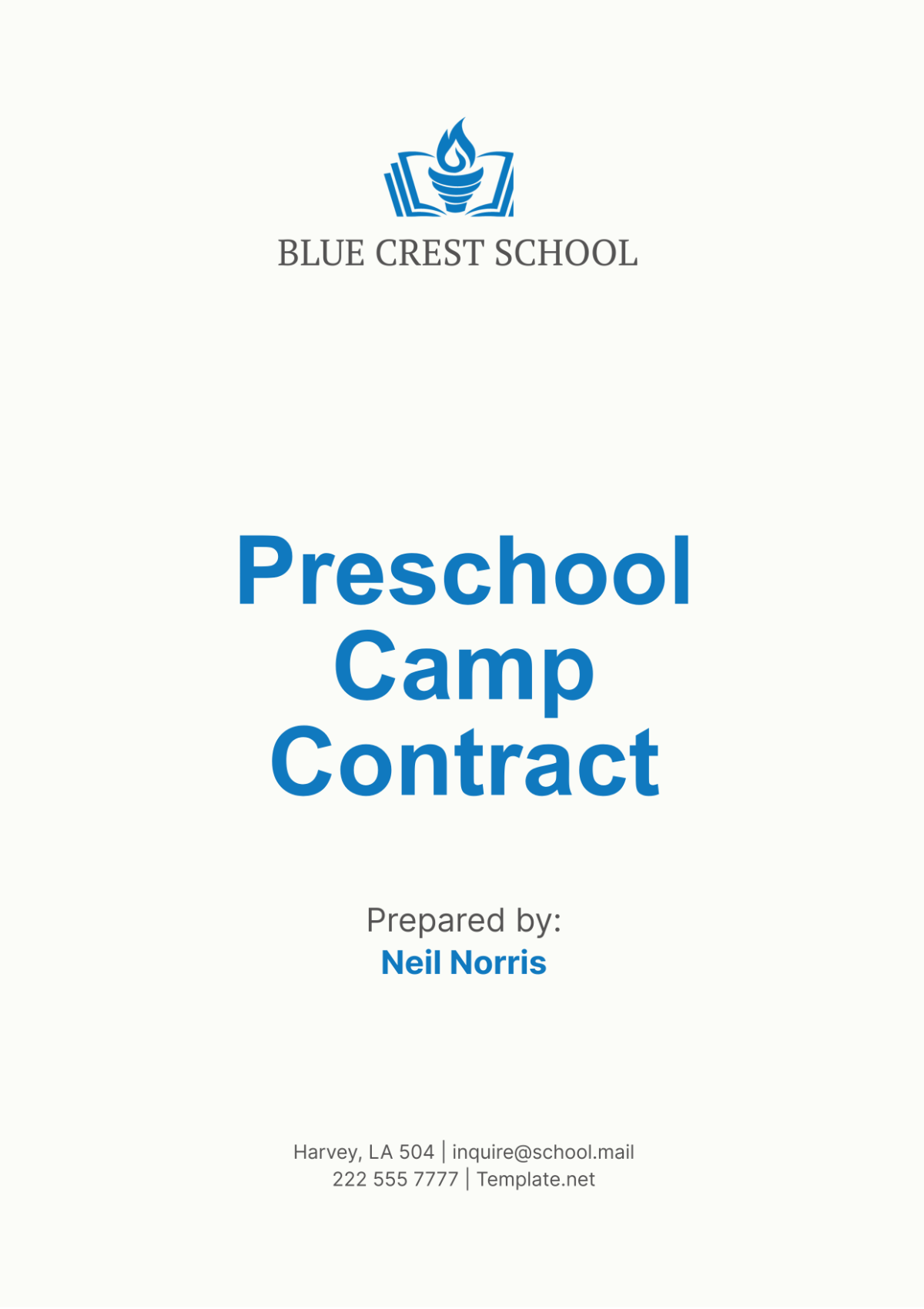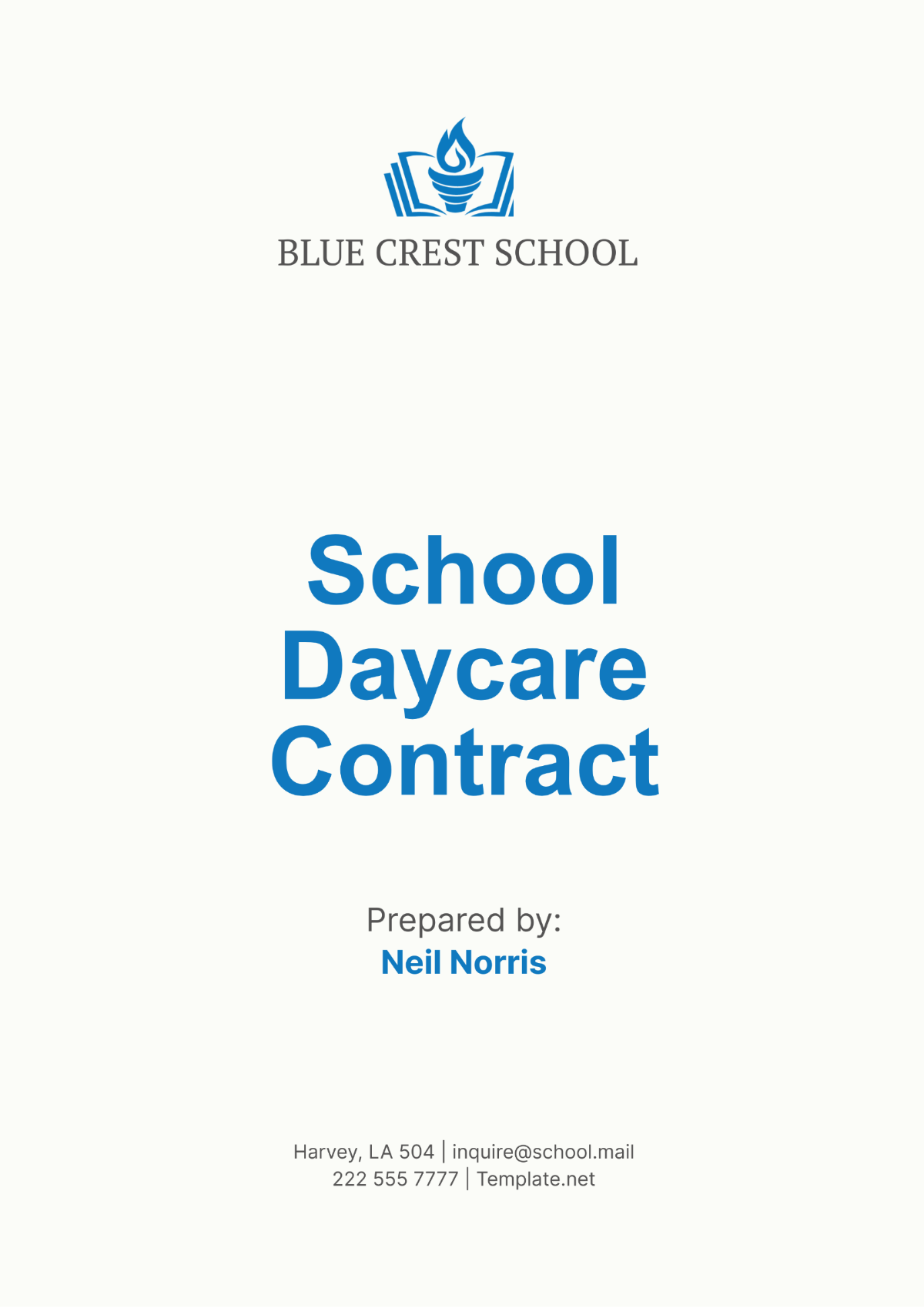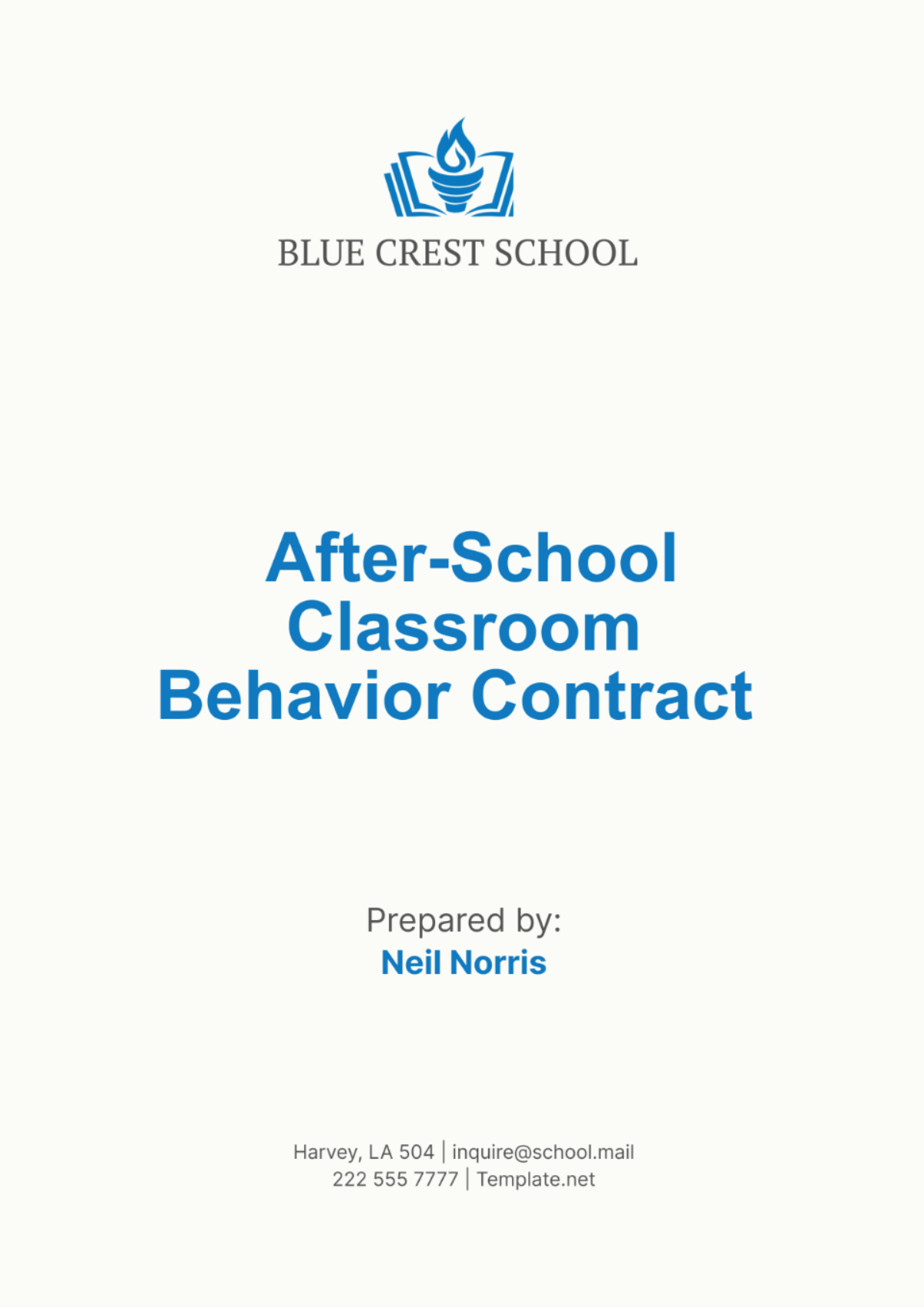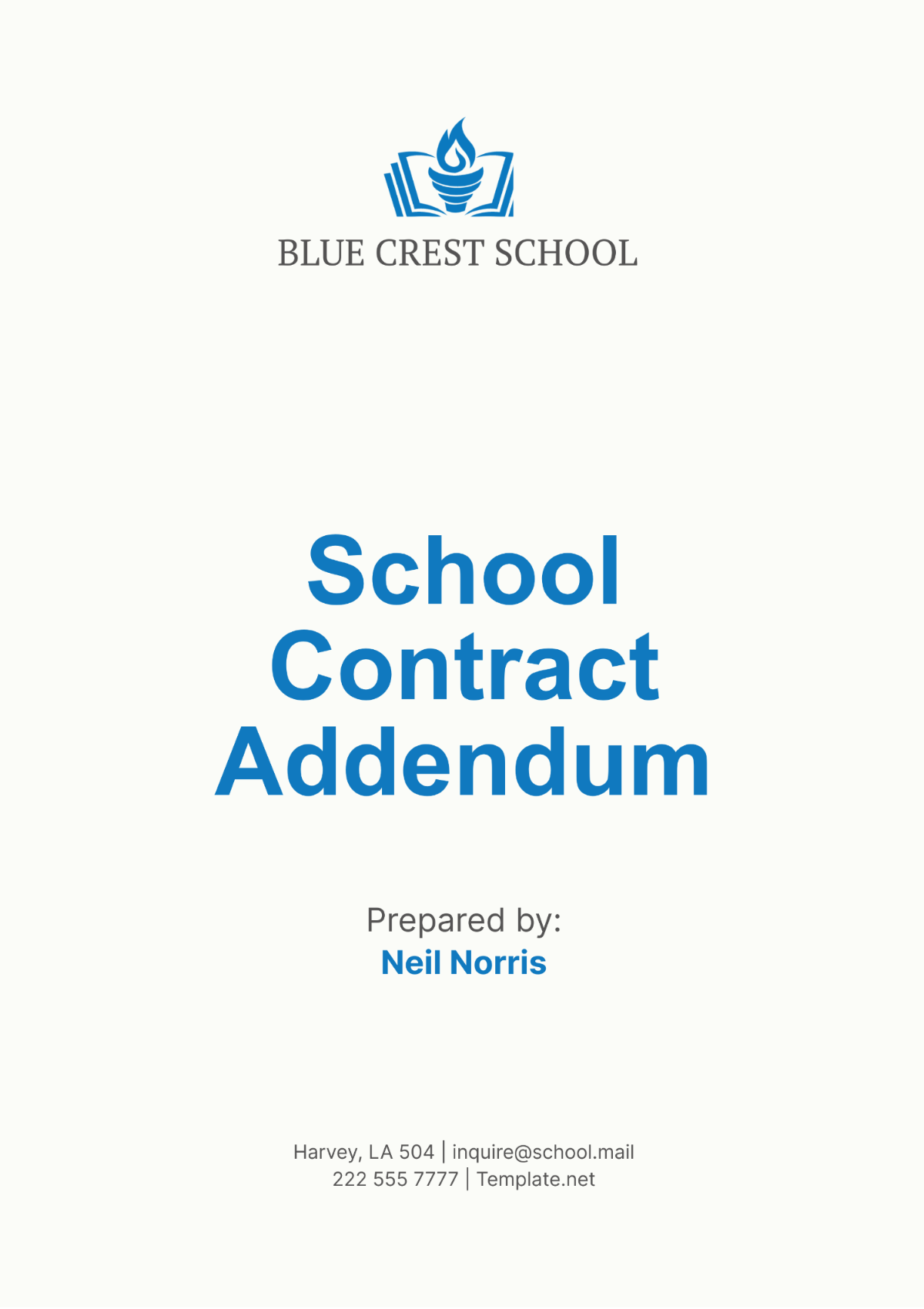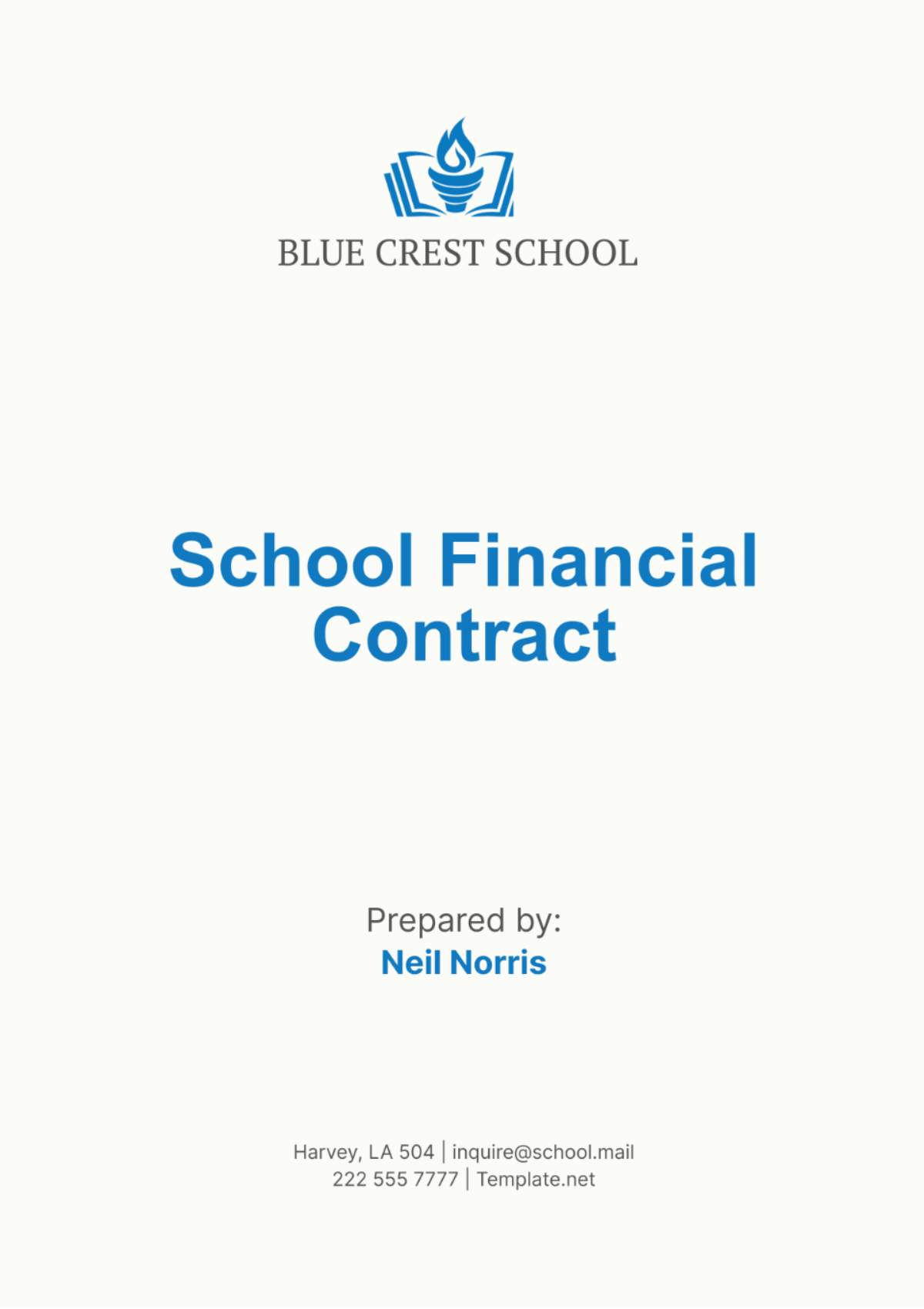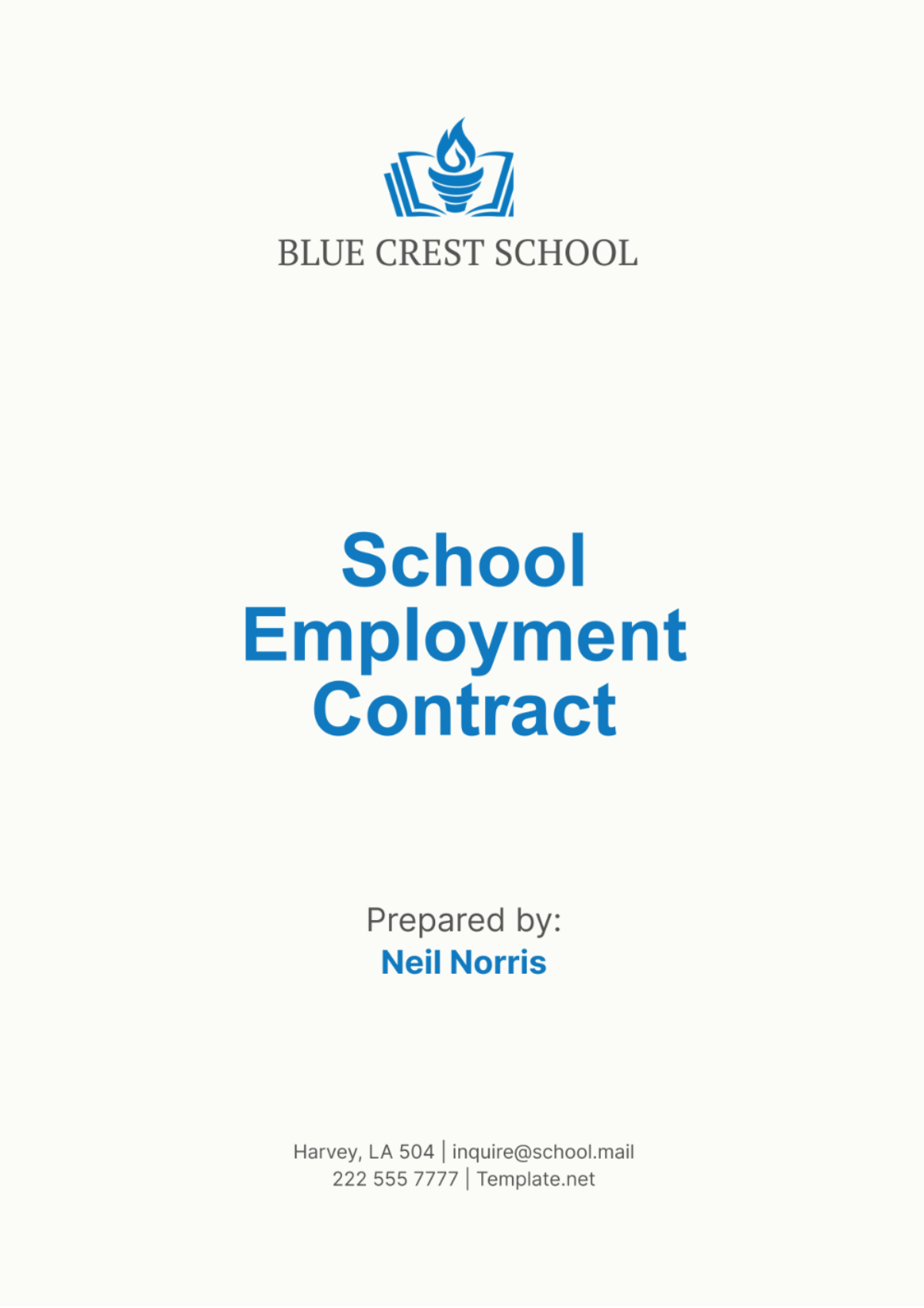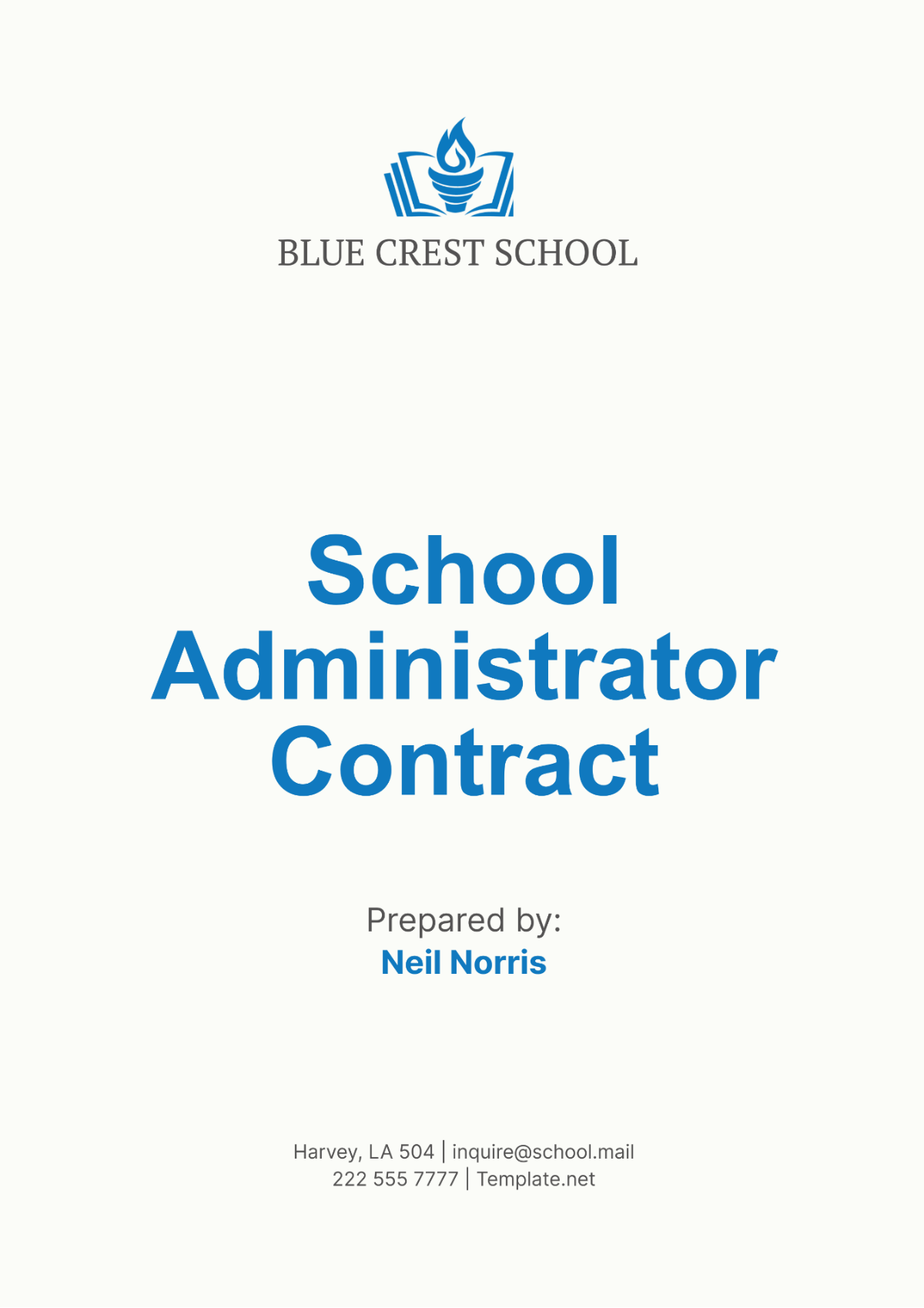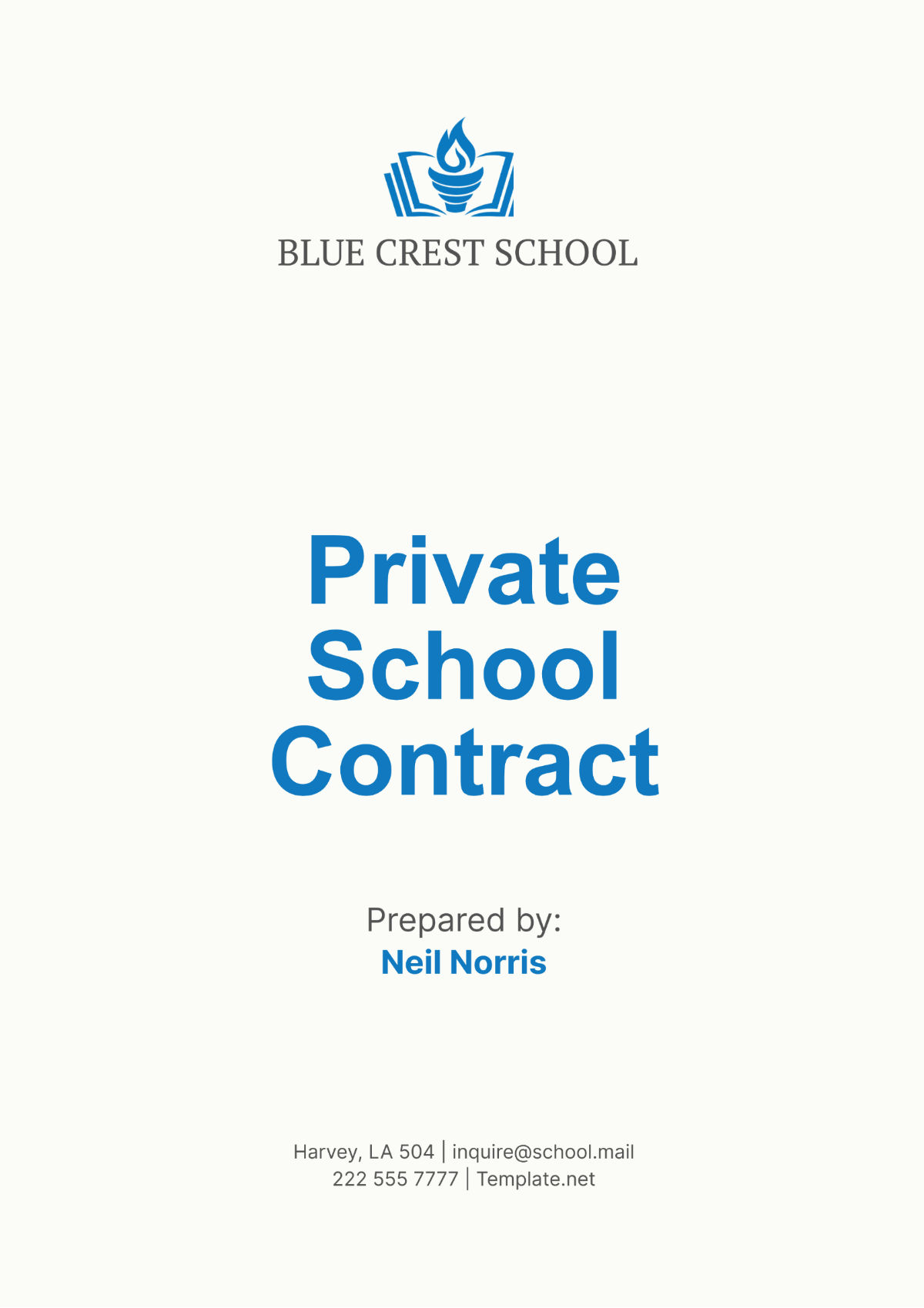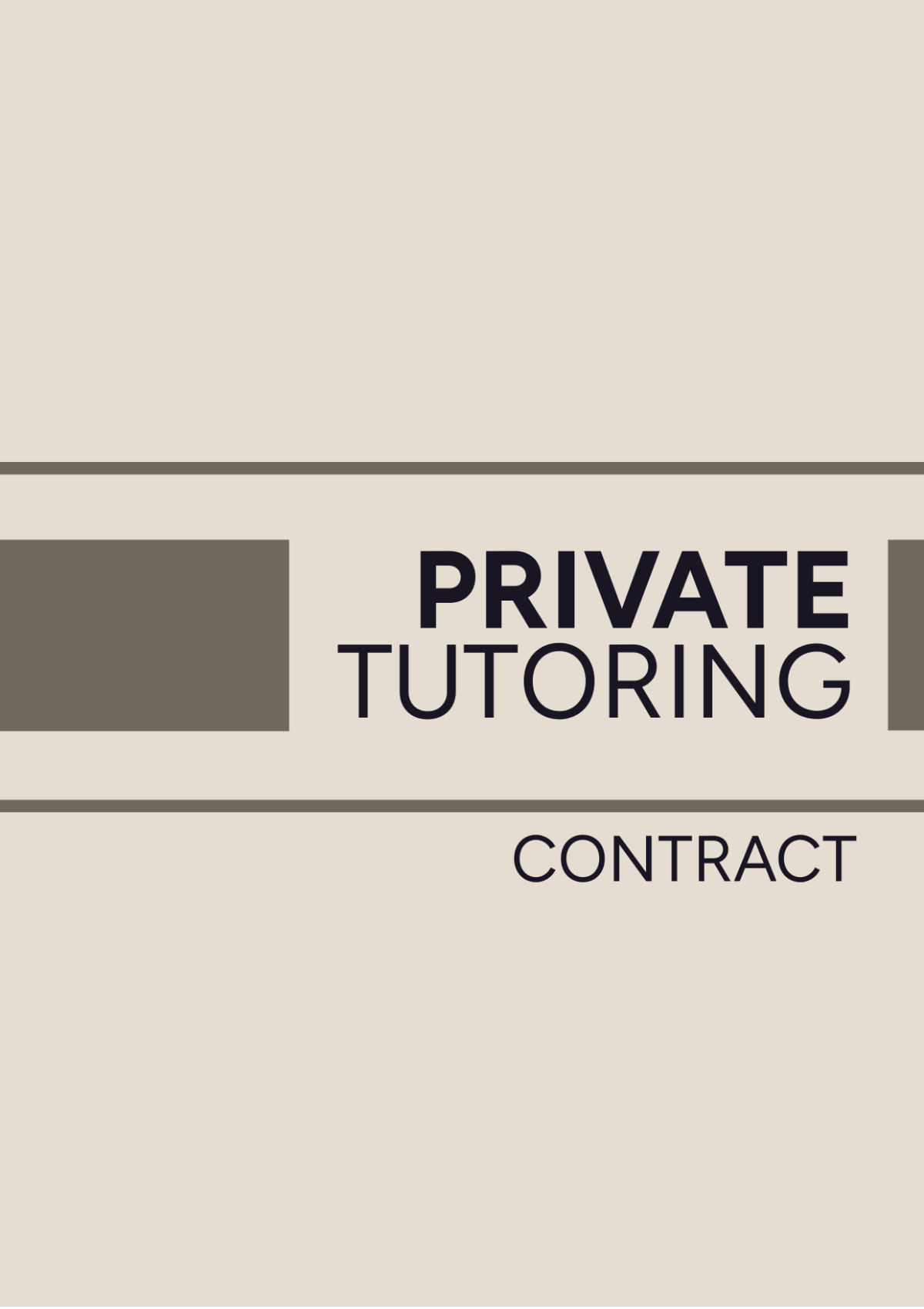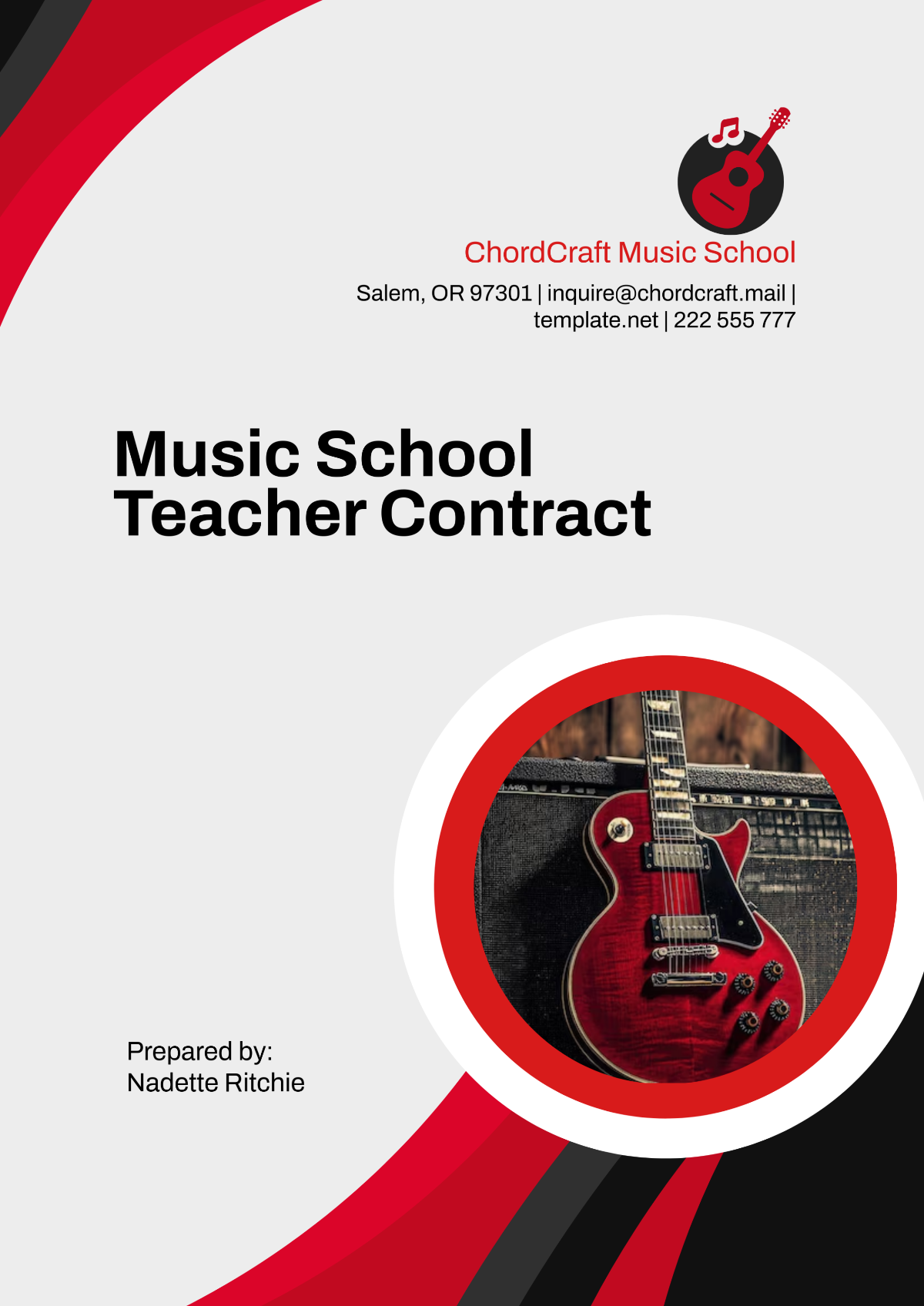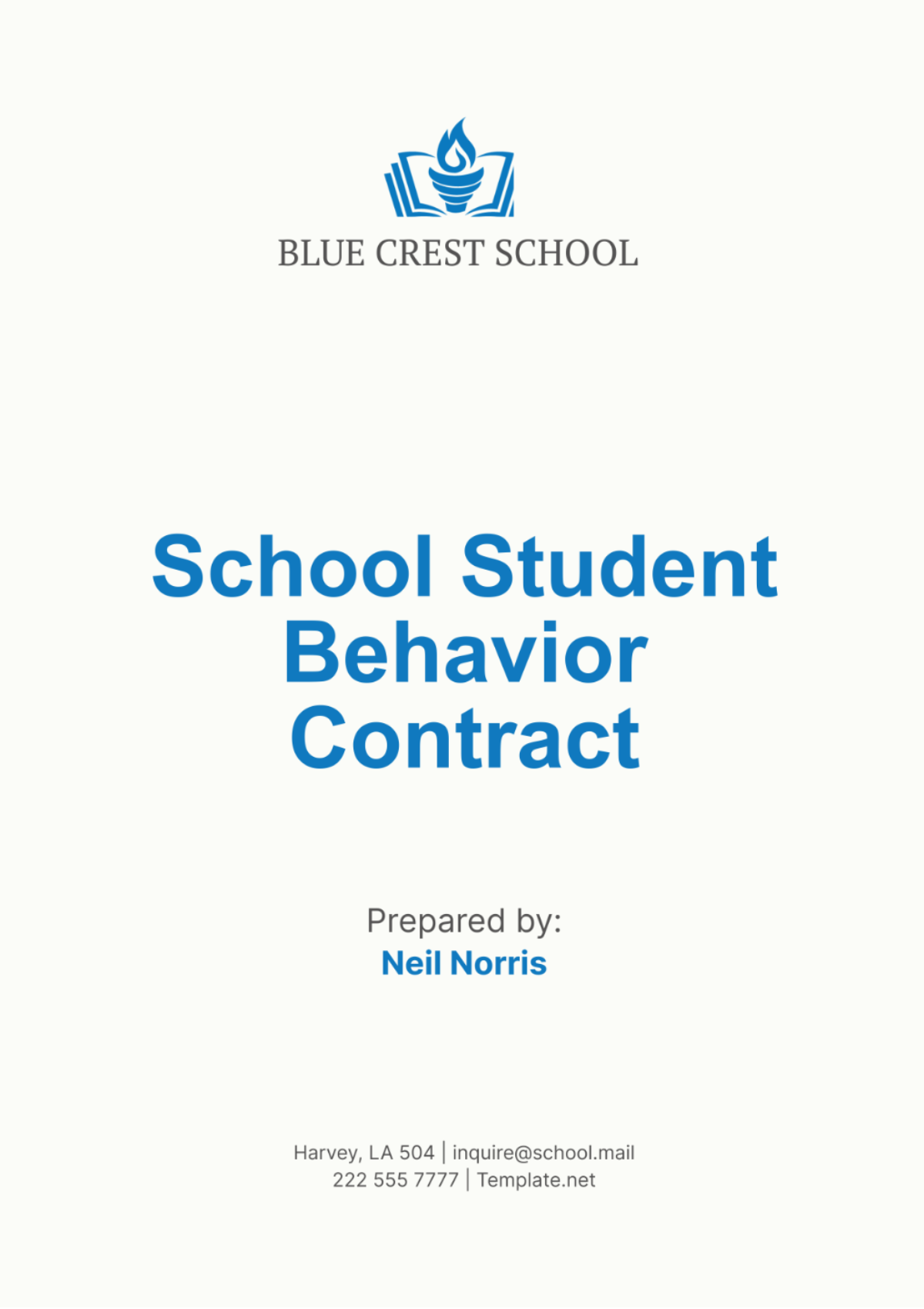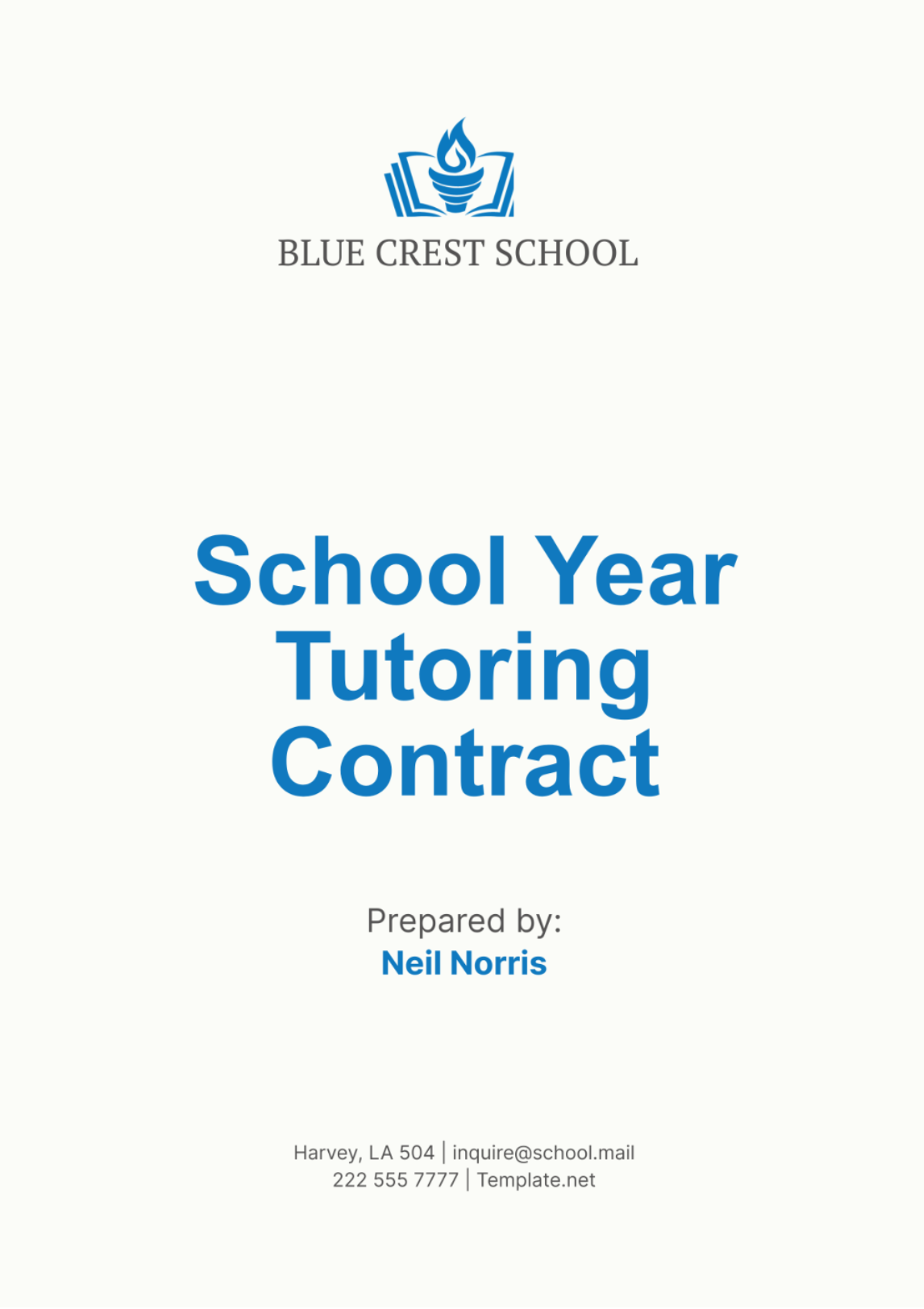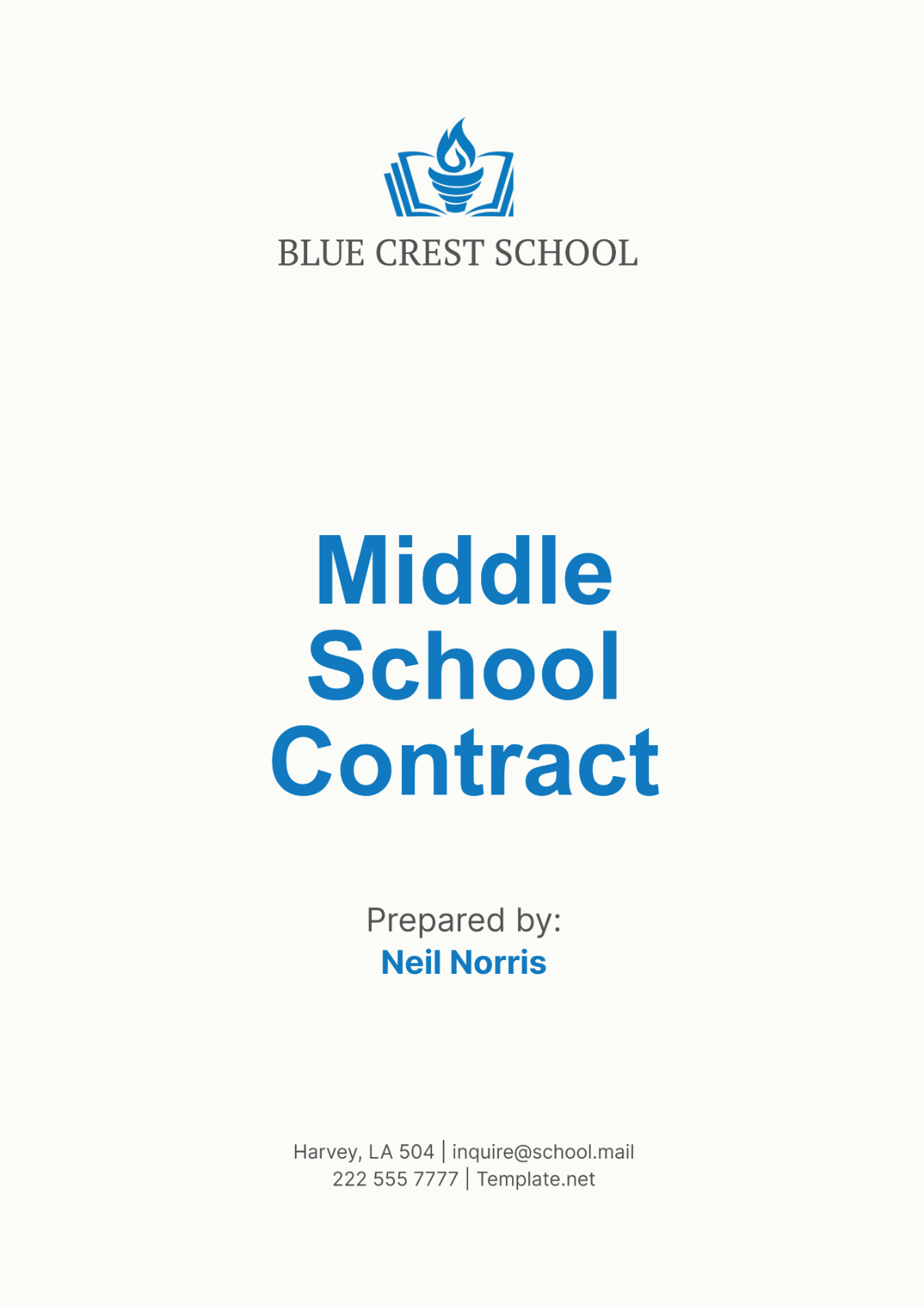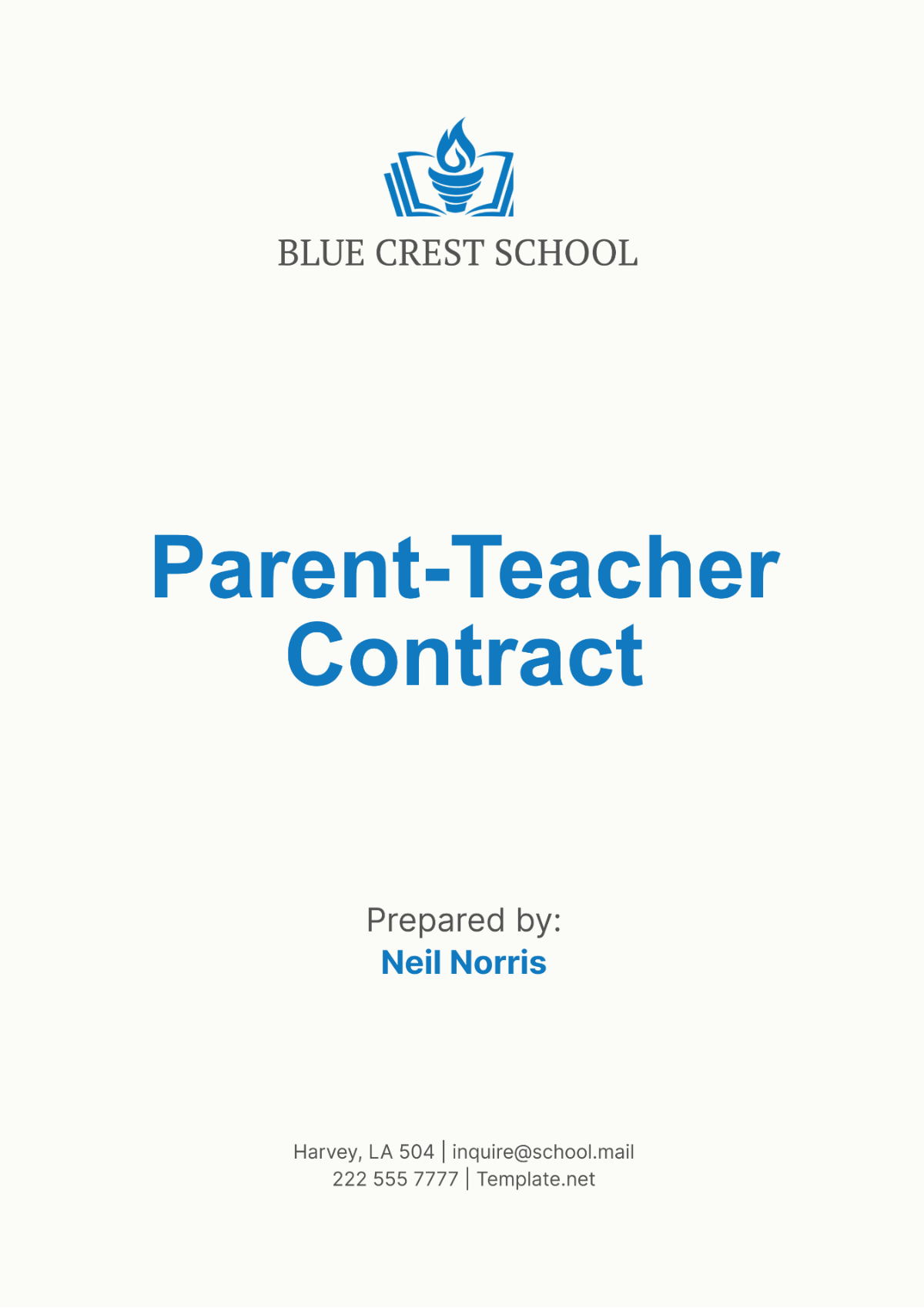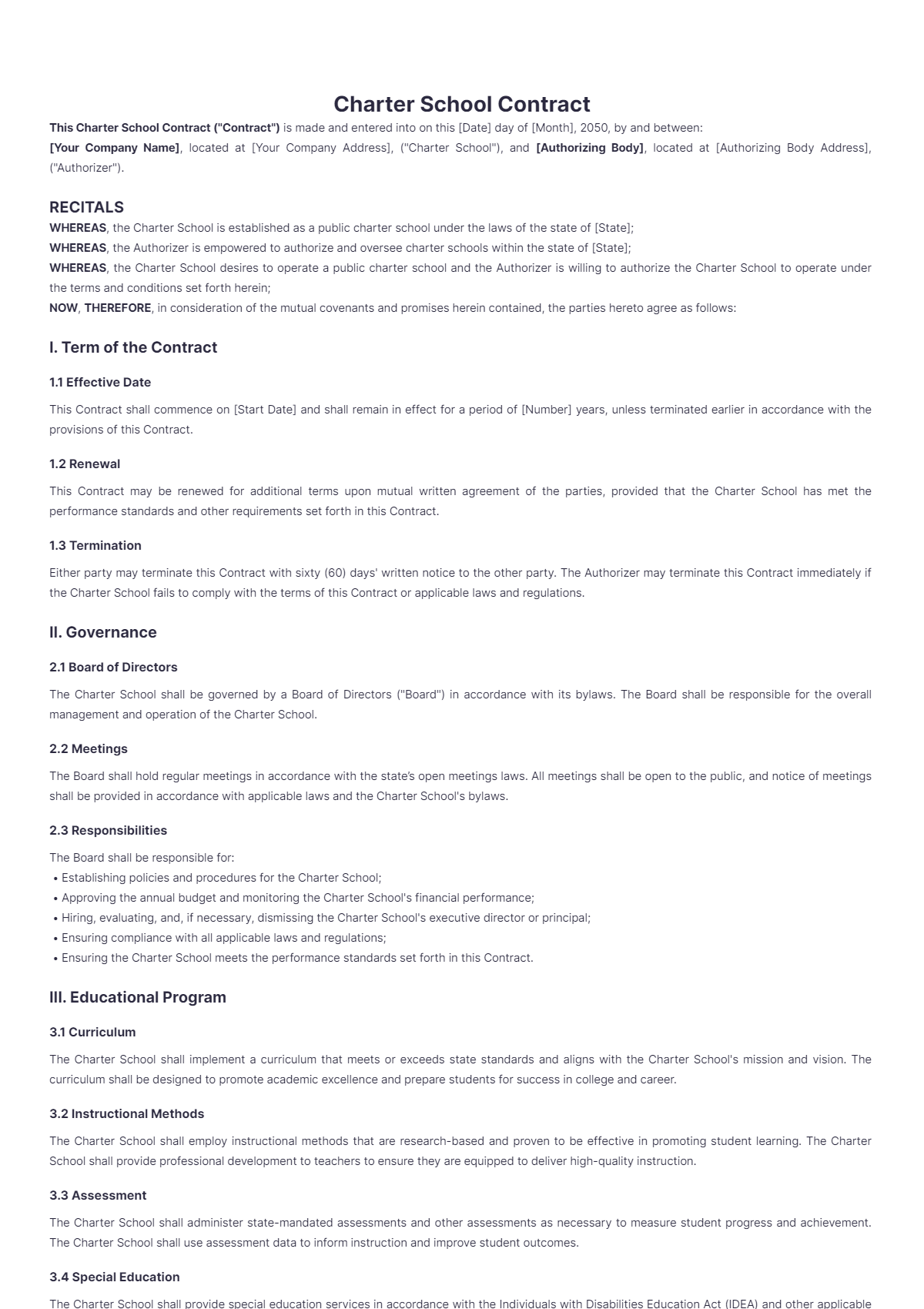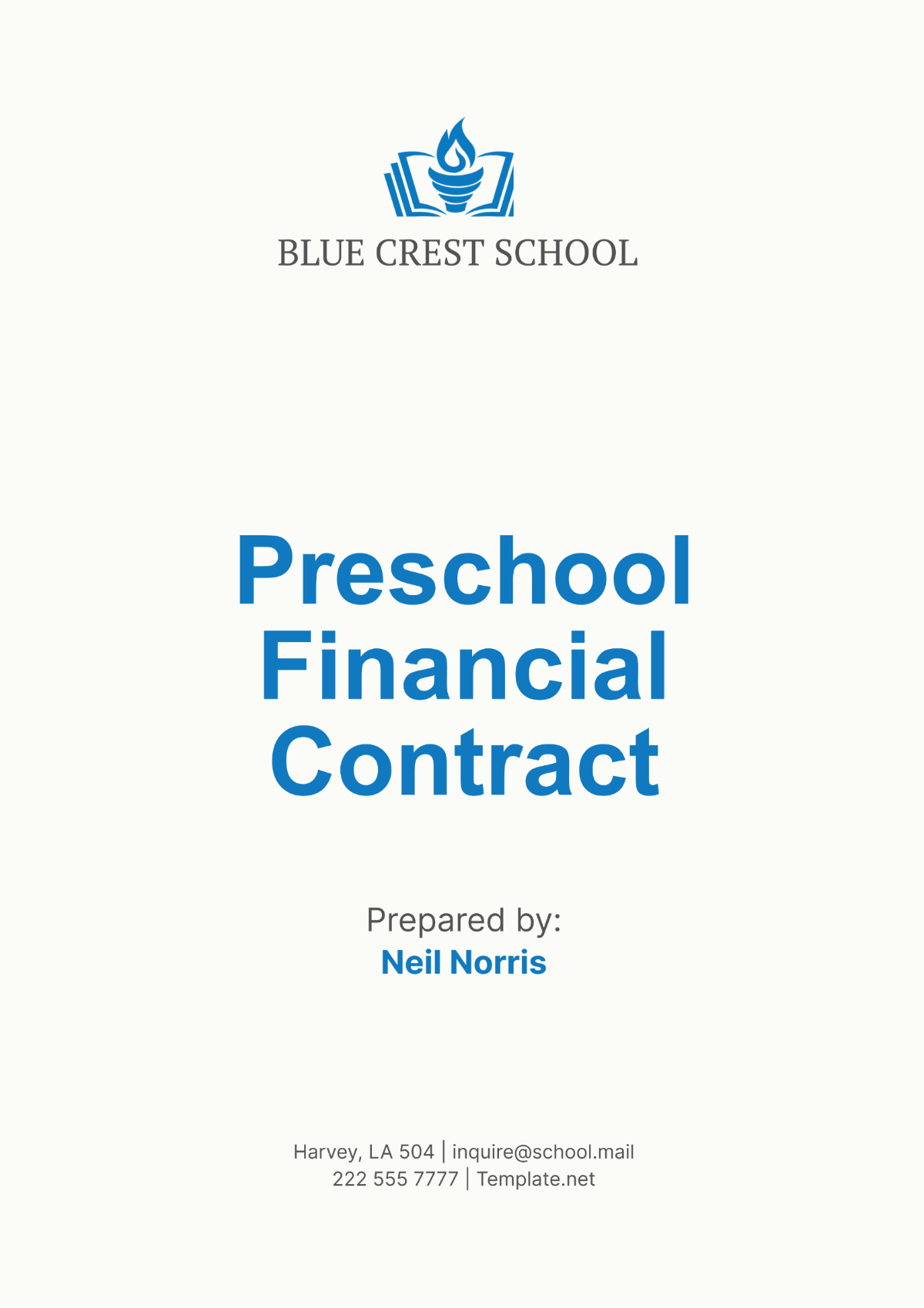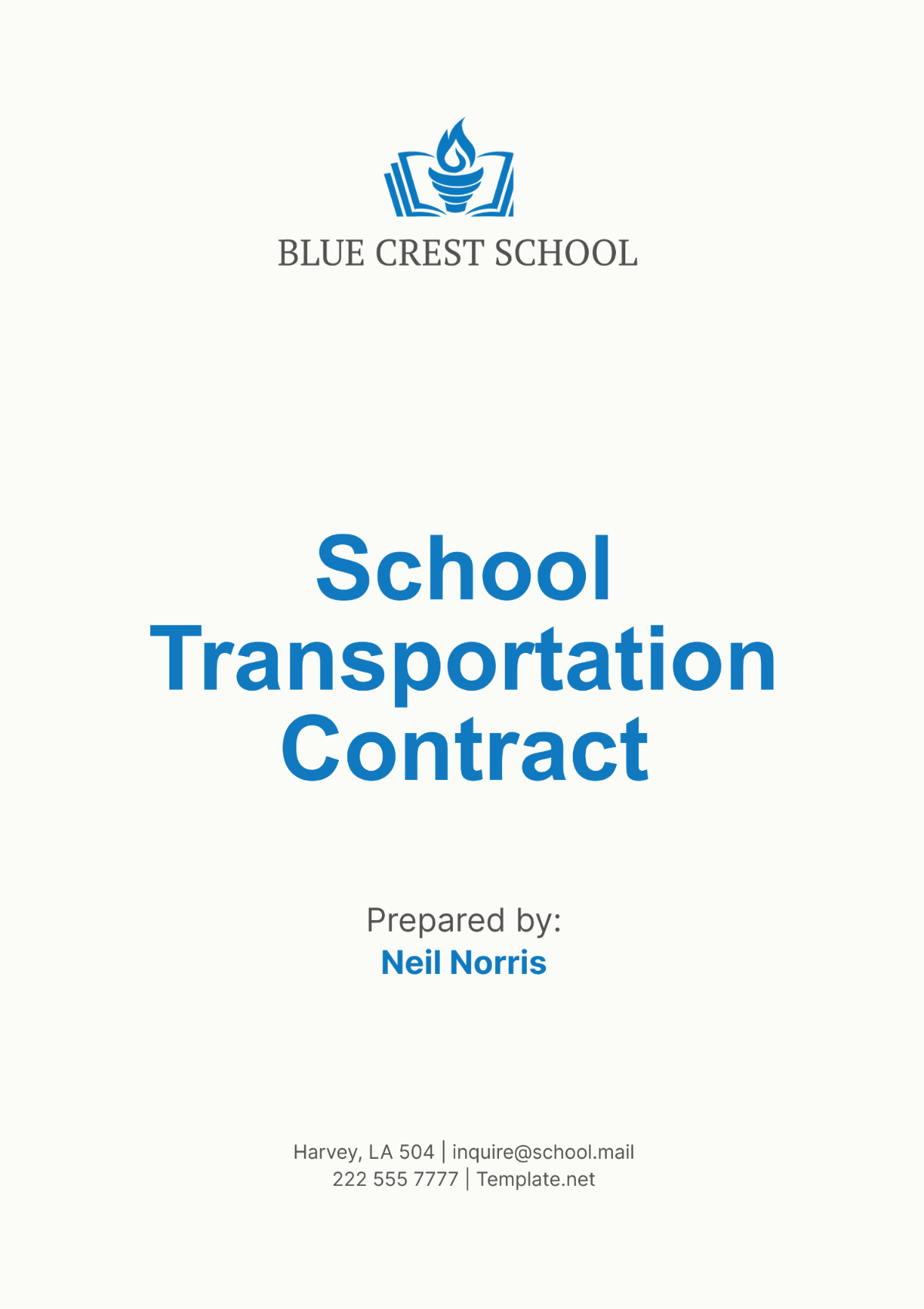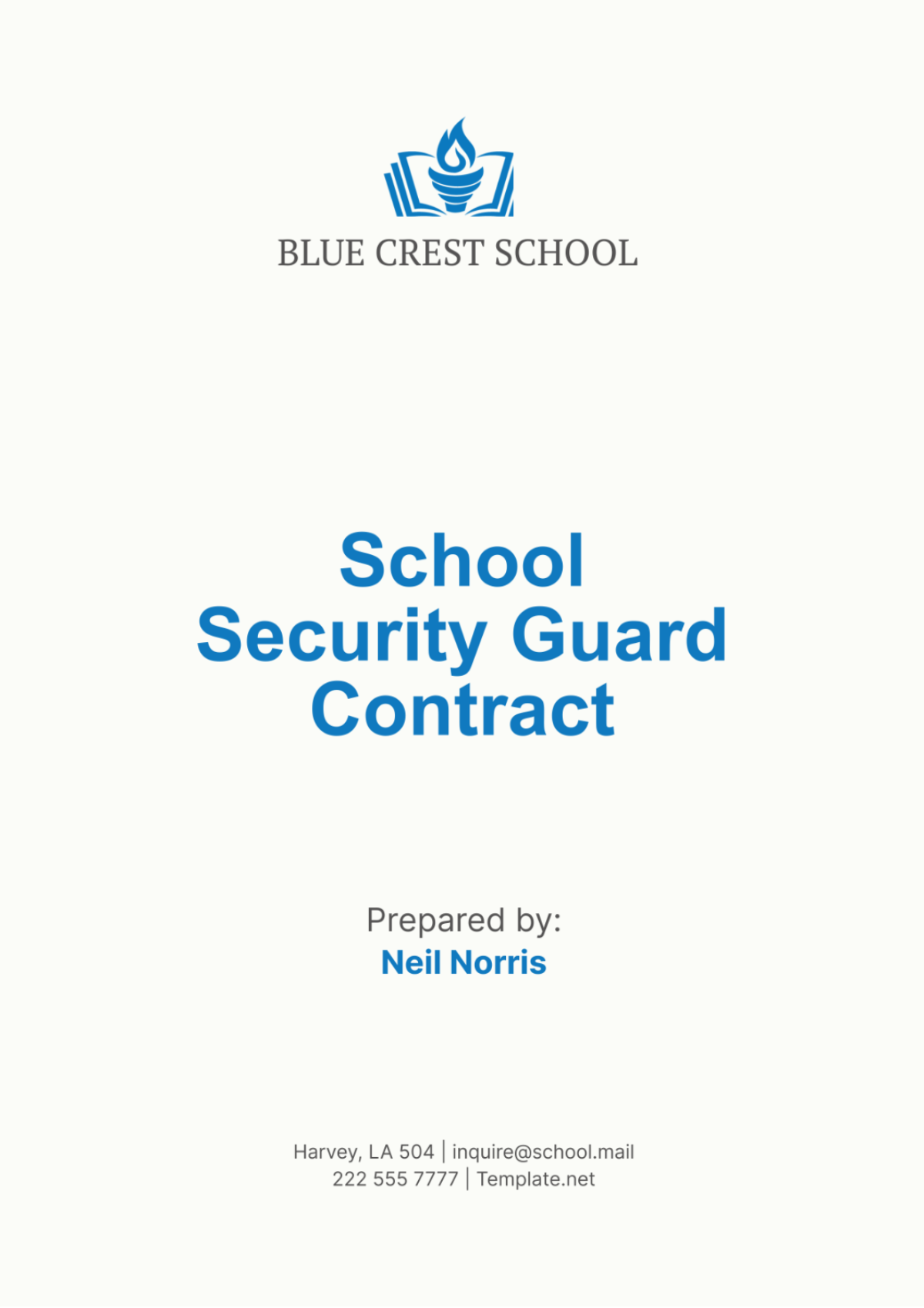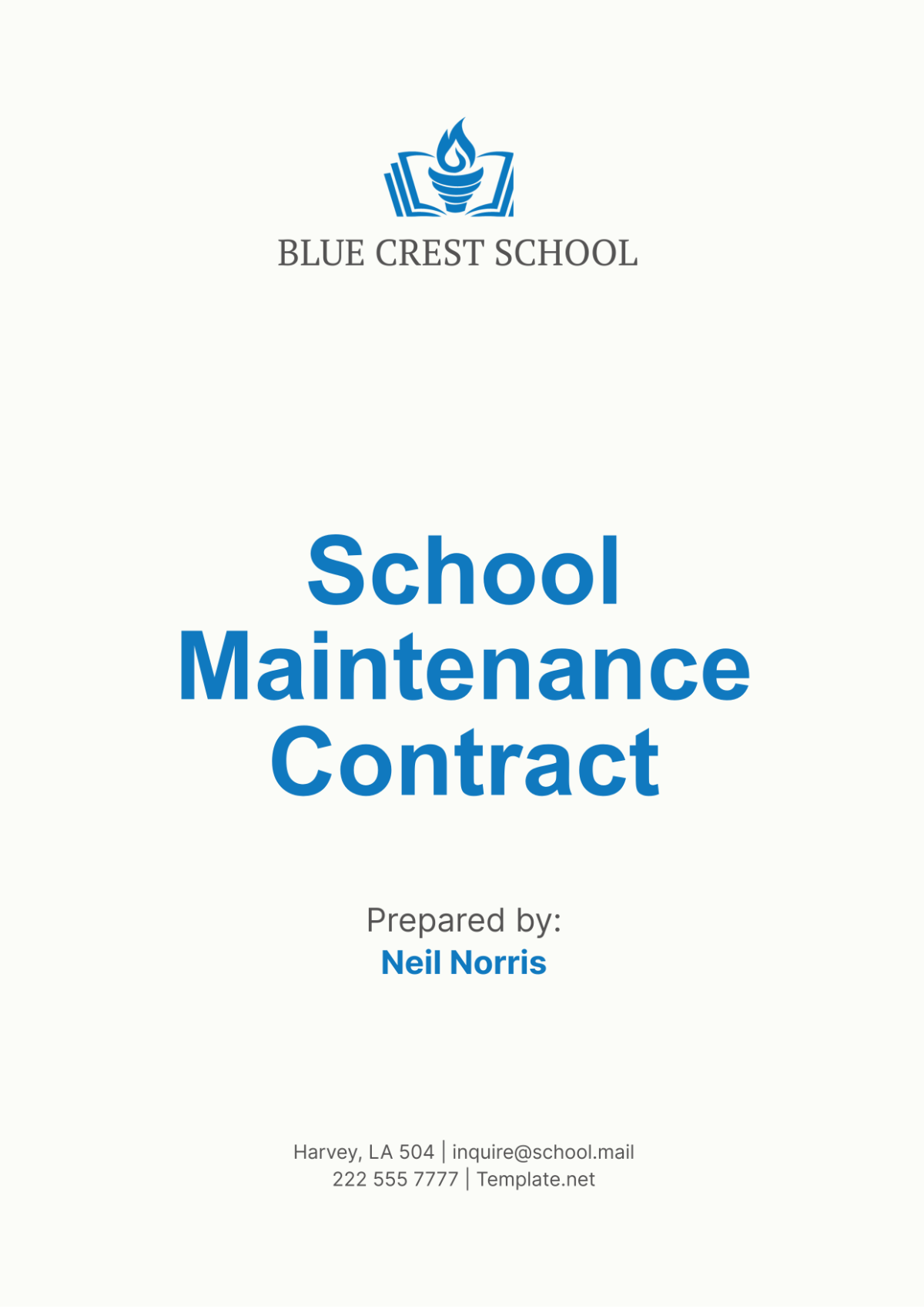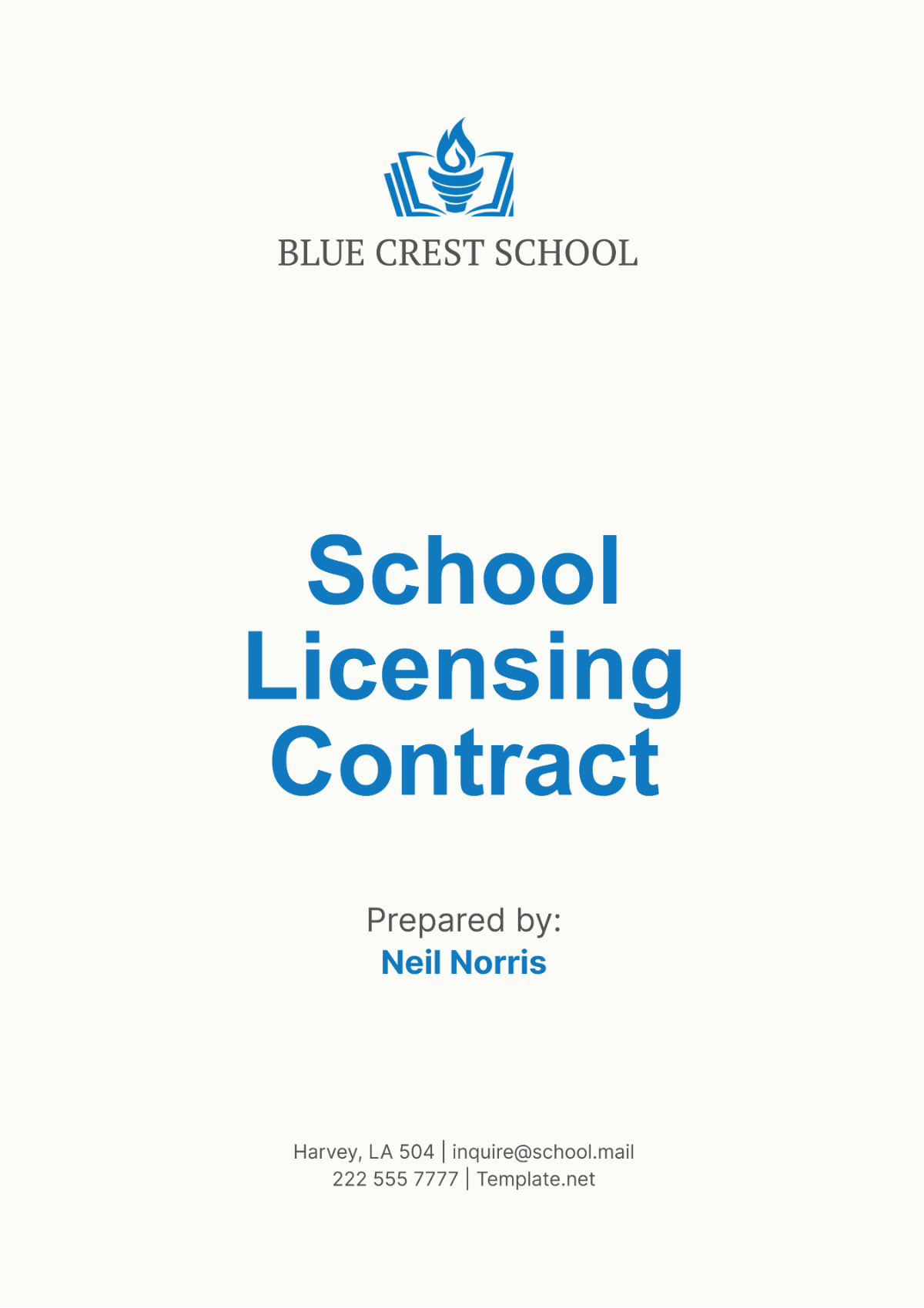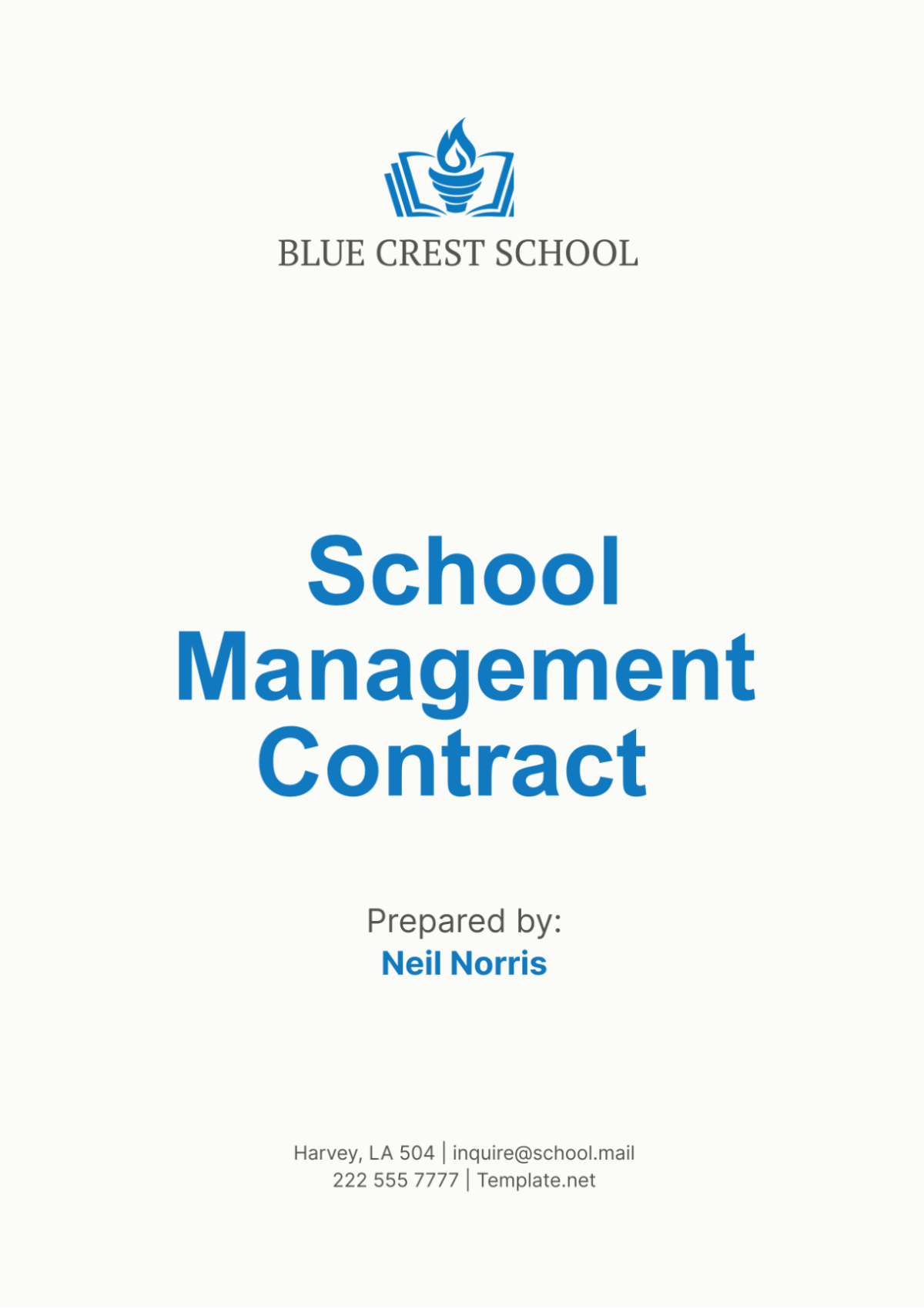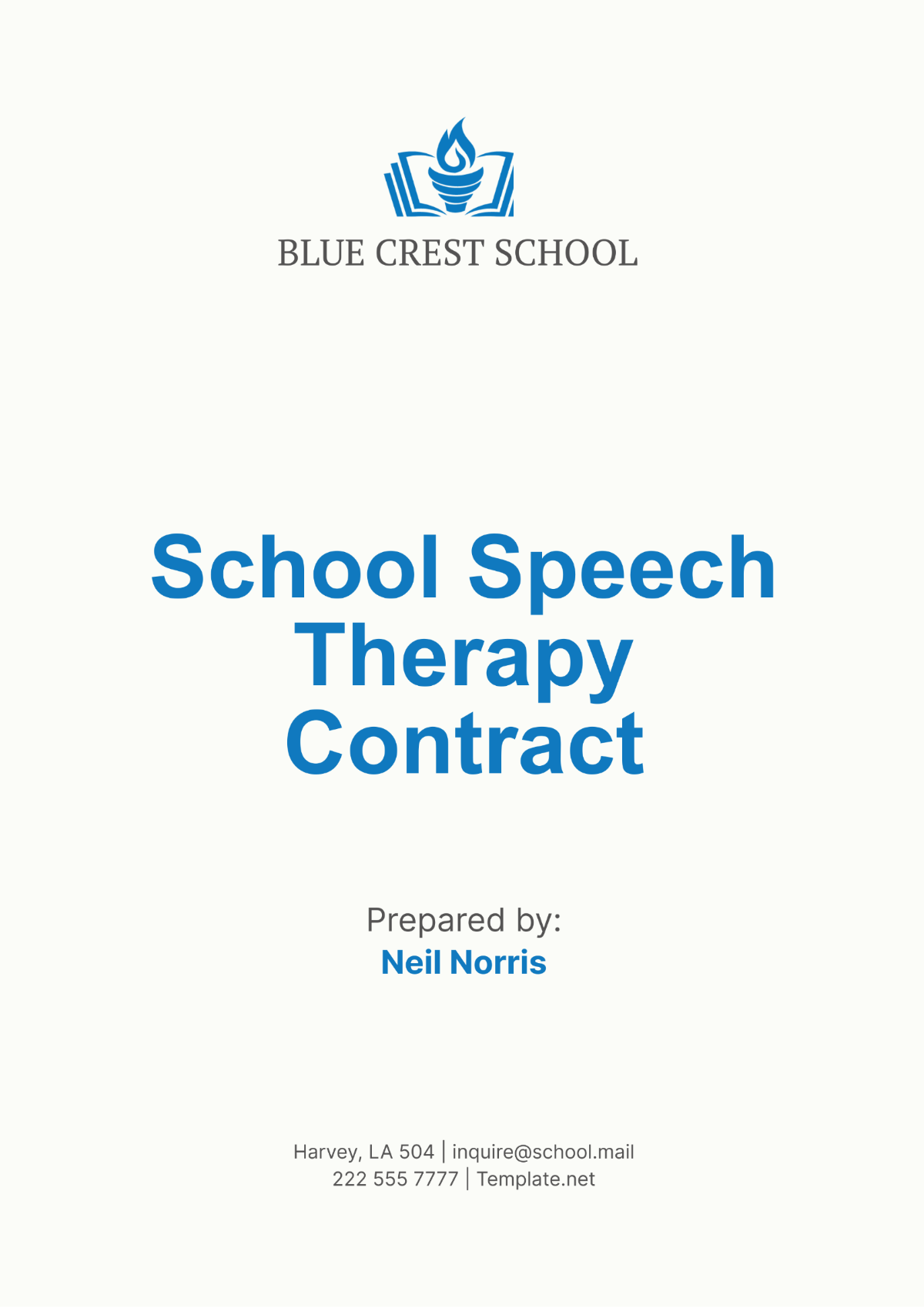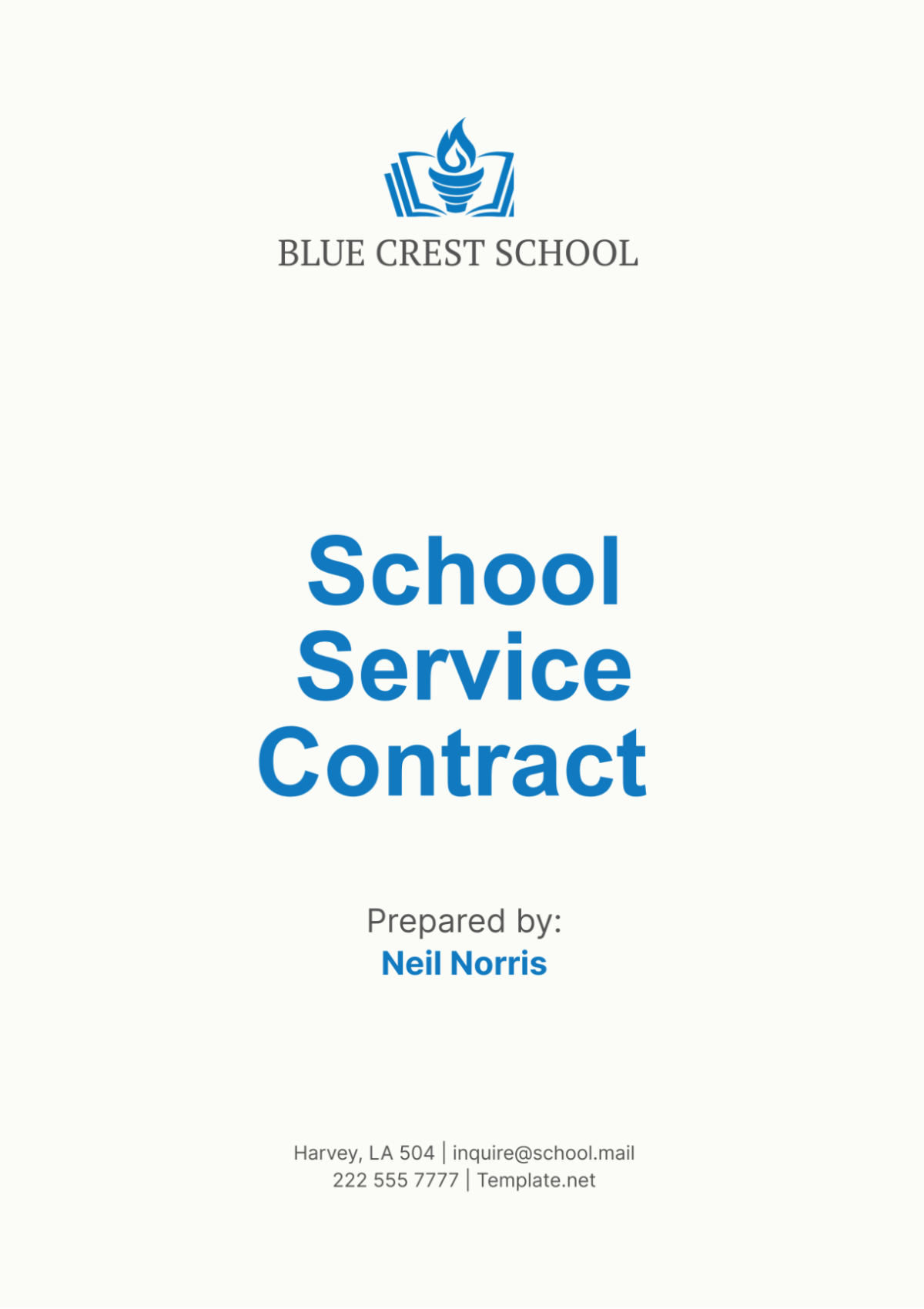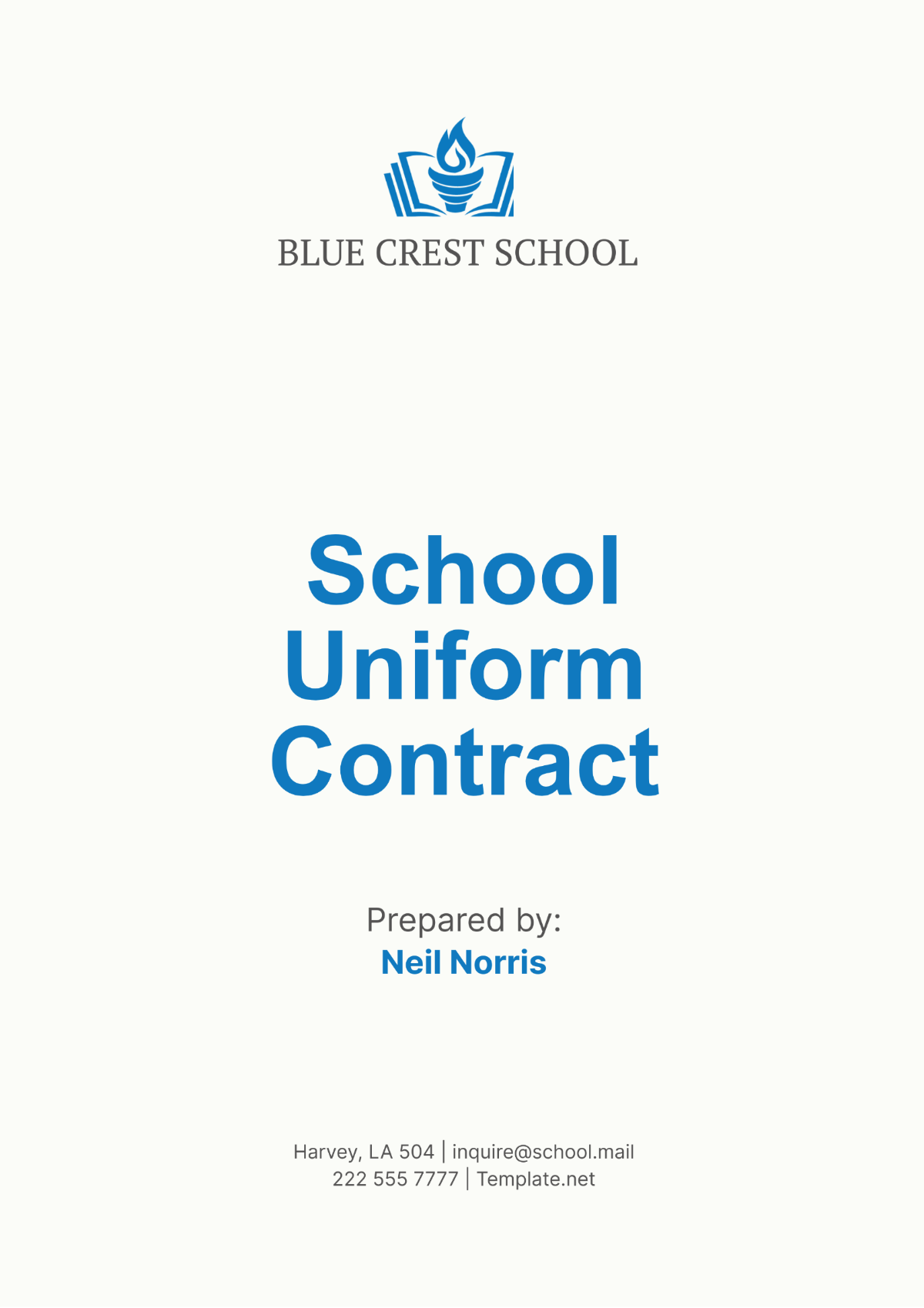Parent-Teacher Contract
I. The Parties
This Parent-Teacher Contract ("Contract") is made and entered into on [Month Day, Year] ("Effective Date") by and between [Teacher’s Name] of [Your Company Name] hereinafter referred to as the ("Teacher") with a primary place of business at [Your Company Address] and [Parent's Name] hereinafter referred to as the ("Parent") residing at [Parent's Address] collectively referred to as the ("Parties").
WHEREAS, the Teacher is committed to providing a comprehensive and supportive educational environment for the student;
WHEREAS, the Parent is committed to supporting their child's educational success through active involvement and cooperation with the Teacher;
WHEREAS, both Parties recognize the importance of mutual respect, collaboration, and clear communication between the school and home for the benefit of the student;
NOW THEREFORE, in consideration of the mutual promises and agreements contained herein, the Parties agree to the following terms and conditions:
II. Communication
A. Channels of Communication
Email Correspondence: Both Parties agree to communicate primarily through email for regular updates and important announcements. Email correspondence should be checked at least daily by both the Parent and the Teacher to ensure timely responses.
Scheduled Meetings: Face-to-face meetings will be scheduled at least [twice] a semester to discuss the student's progress and address any concerns. Additional meetings may be requested by either party as needed.
Communication Log: A communication log will be maintained by the Teacher to document significant interactions and information exchanged between the Parent and the Teacher.
B. Timeliness of Responses
Teacher's Response Time: The Teacher agrees to respond to the Parent's queries within [2] business days. Exceptions will be communicated if the Teacher is unavailable due to unforeseen circumstances.
Parent's Acknowledgment: The Parent agrees to acknowledge receipt of important communications, such as progress reports and behavior notes, within [2] business days to confirm awareness.
Respectful Dialogue: Both Parties agree to use respectful and professional language in all communications to maintain a positive and constructive dialogue.
C. Additional Communication Methods
Phone Calls: Phone calls may be used for urgent matters requiring immediate attention. Both Parties should ensure availability and responsiveness to such calls.
Classroom Newsletters: The Teacher will send out monthly classroom newsletters to keep Parents informed about classroom activities, upcoming events, and important dates.
School Communication Platforms: Both Parties will utilize the school's designated communication platforms for updates, announcements, and collaborative interactions.
III. Academic Support
A. Teacher Responsibilities
Syllabus Distribution: The Teacher will provide a syllabus at the beginning of the school year outlining the curriculum, learning objectives, and key dates for assessments. This document will serve as a guide for both the Parent and the student.
Homework Assignments: Regular homework assignments will be given to reinforce classroom learning. The Teacher will ensure assignments are clear and manageable within the student's capacity.
Additional Resources: Additional resources, such as reading materials and online tools, will be recommended by the Teacher to support the student's learning. These resources will be shared with the Parent for at-home use.
Prompt Feedback: Prompt feedback on assignments and assessments will be provided to help gauge the student's understanding and progress. Feedback will be both constructive and encouraging.
Individual Support: The Teacher will offer additional individual support sessions for students who need extra help in understanding the curriculum.
B. Parent Responsibilities
Study Environment: The Parent agrees to provide a quiet and supportive environment at home conducive to studying and completing homework. This includes setting specific times for school-related activities.
Regular Review: The Parent will regularly review the student's homework, assignments, and progress reports to stay informed about their academic performance. Any concerns will be promptly communicated to the Teacher.
Supportive Activities: The Parent agrees to support the Teacher's recommendations and follow through with suggested activities and resources to aid the student's learning. This includes encouraging the student to utilize additional resources provided by the Teacher.
Meeting Attendance: Attendance at scheduled parent-teacher meetings is a priority for the Parent. These meetings are crucial for discussing the student's progress, addressing concerns, and setting future goals.
C. Collaborative Efforts
Monitoring Progress: The Parent will monitor the student's academic progress and collaborate with the Teacher to address any identified challenges.
Encouraging Learning: The Parent will encourage a love for learning by engaging in educational activities at home, such as reading together and exploring educational games.
Consistency in Education: The Parent will ensure consistency in educational practices at home and school, reinforcing the importance of education and good study habits.
IV. Behavioral Expectations
A. Teacher's Role
Classroom Rules: The Teacher will establish clear and consistent classroom rules and expectations. These rules will be communicated to both the student and the Parent at the start of the school year.
Positive Reinforcement: Positive behavior reinforcement strategies will be employed by the Teacher to encourage good conduct and academic diligence among students. This may include rewards and recognition for exemplary behavior.
Behavioral Issues: Any behavioral issues will be addressed promptly by the Teacher. Incidents will be documented, and the Parent will be informed to collaborate on an appropriate response.
Role Modeling: The Teacher will model respectful and ethical behavior, serving as a role model for students. This includes demonstrating good communication, fairness, and empathy.
B. Parent's Role
Reinforcing Rules: The Parent agrees to discuss the classroom rules and expectations with their child at home to reinforce the importance of good behavior. This helps to create a consistent understanding between home and school.
Positive Reinforcement: Positive reinforcement will also be practiced at home to recognize and encourage the child's good behavior and academic effort. This might include verbal praise or small rewards.
Collaborative Strategies: If behavioral issues arise, the Parent agrees to work collaboratively with the Teacher to address the root causes and implement strategies to improve the child's conduct. This might involve setting up a daily or weekly behavior chart.
Monitoring Social Interactions: The Parent will monitor their child's social interactions and behavior outside of school to ensure consistency in their conduct. Any external factors influencing the child's behavior at school will be communicated to the Teacher for appropriate action.
C. Support Systems
Behavioral Plans: The Parent will support the implementation of any behavioral plans developed by the Teacher and school counselor to address specific behavioral issues.
Emotional Support: The Parent will provide emotional support to the child, helping them understand the consequences of their actions and encouraging positive behavior changes.
Regular Updates: The Parent will regularly update the Teacher on any significant changes in the child's behavior at home that might impact their behavior at school.
V. Attendance and Punctuality
A. Teacher's Responsibilities
Attendance Records: The Teacher will maintain accurate attendance records and regularly report absences or tardiness to the Parent. This helps in identifying patterns and addressing potential issues early.
Attendance Education: The Teacher will educate students on the importance of regular attendance and punctuality. This includes discussing the impact on their learning and overall academic success.
Absenteeism Plan: In the event of an absenteeism issue, the Teacher will collaborate with the Parent to develop a plan to improve attendance. This plan will include setting achievable goals and providing support where needed.
B. Parent's Responsibilities
Regular Attendance: The Parent agrees to ensure their child attends school regularly and arrives on time. This involves setting a consistent morning routine and providing necessary support to prepare for school.
Timely Communication: If the child must be absent, the Parent will inform the Teacher as soon as possible, providing a valid reason and expected return date. Timely communication is crucial in these cases.
Importance of Attendance: The Parent will encourage their child to understand the importance of attendance and punctuality for their educational growth. This includes discussing how missing school can affect their learning.
Supporting Routines: The Parent will establish and maintain consistent daily routines to support the child's regular attendance and punctuality.
C. Collaboration on Attendance
Addressing Challenges: The Parent and Teacher will work together to address any challenges related to attendance and punctuality, ensuring a supportive approach to improving these areas.
Reward Systems: Both Parties will consider implementing reward systems to encourage and recognize consistent attendance and punctuality.
Monitoring Progress: Regular monitoring and updates on the student's attendance patterns will be conducted to ensure continuous improvement.
VI. Parental Involvement
A. Volunteering and Participation
Classroom Volunteering: The Parent is encouraged to volunteer in the classroom or at school events whenever possible. This involvement demonstrates to the student the importance of their education and fosters a stronger school community.
PTA Meetings: Participation in Parent-Teacher Association (PTA) meetings is vital for staying informed and involved with school-wide initiatives and decisions. The Parent agrees to attend at least [3] PTA meetings per academic year.
Fundraising Activities: The Parent will support school fundraising activities and events that benefit the entire student body. This support might include donating time, resources, or participating in events.
B. Sharing Expertise and Resources
Professional Skills: The Parent is encouraged to share any relevant expertise or resources that could benefit the classroom, such as professional skills, cultural knowledge, or materials. This contribution enriches the learning experience for all students.
Extracurricular Support: The Parent agrees to assist in coordinating or supporting extracurricular activities that align with their interests or skills. This may include coaching a sports team or leading a school club.
Online Engagement: The Parent will engage with the school's online platforms and communication tools to stay updated on school news, events, and opportunities to get involved. This regular engagement ensures they are well-informed and active in the school community.
C. Building Community
Community Events: The Parent will participate in and support community events organized by the school, helping to build a strong, inclusive school community.
Parental Networks: The Parent will connect with other parents to share experiences, resources, and support, fostering a collaborative and supportive parent network.
School Improvement Initiatives: The Parent will contribute to school improvement initiatives, offering suggestions and feedback to enhance the educational environment for all students.
VII. Conflict Resolution
A. Teacher's Approach
Calm and Constructive Approach: The Teacher will employ a calm and constructive approach to resolving conflicts with the Parent or the student. This includes actively listening to concerns and addressing them respectfully and professionally.
Documentation of Conflicts: Documentation of conflicts and resolutions is essential. The Teacher will maintain a record of significant issues and the steps taken to resolve them. This documentation helps in tracking patterns and improving strategies.
Seeking Assistance: In cases where conflicts cannot be resolved through direct communication, the Teacher will seek assistance from school administration or a mediator to facilitate a fair outcome. This ensures an impartial resolution process.
B. Parent's Approach
Respectful Communication: The Parent agrees to address conflicts directly with the Teacher in a respectful and constructive manner. This includes scheduling a meeting to discuss concerns rather than escalating the issue through informal channels.
Honest Dialogue: Open and honest communication is key. The Parent will provide all relevant information and context during conflict resolution discussions to help the Teacher understand the issue fully.
Formal Grievance Procedures: If a satisfactory resolution cannot be reached, the Parent agrees to follow the school's formal grievance procedures. This process involves escalating the issue to school administration or a designated mediator for further intervention.
C. Collaborative Resolution
Problem-Solving Meetings: The Parent and Teacher will schedule problem-solving meetings to address ongoing conflicts, focusing on collaborative solutions and mutual understanding.
Mediation Support: Both Parties agree to consider mediation support when conflicts are complex or persistent, ensuring a fair and balanced resolution process.
Continuous Improvement: Regular reviews of conflict resolution processes and outcomes will be conducted to improve strategies and prevent future issues.
VIII. Student's Well-being
A. Physical Well-being
Health Education: The Teacher will promote activities and lessons that encourage physical well-being, such as integrating physical education and health topics into the curriculum. This holistic approach supports the student's overall development.
Health Concerns: If any physical health concerns arise, the Teacher will promptly inform the Parent and provide recommendations or referrals for appropriate support. Early intervention is crucial for addressing health issues.
Safe Environment: The Teacher will ensure the classroom environment is safe and conducive to learning, free from hazards that could affect the student's physical well-being. Regular safety checks and protocols will be followed.
B. Emotional Well-being
Positive Atmosphere: The Teacher will foster a positive classroom atmosphere that supports the emotional well-being of all students. This includes adopting practices that promote inclusivity, respect, and empathy.
Emotional Concerns: If emotional or psychological concerns are observed, the Teacher will communicate with the Parent to discuss potential strategies and resources for support. Early identification and collaboration are essential for addressing these concerns.
Social-Emotional Learning: Classroom activities will include lessons on social and emotional learning to help students develop resilience, self-awareness, and interpersonal skills. This proactive approach supports their emotional growth.
Collaborative Support: The Teacher will work collaboratively with school counselors and mental health professionals to support students facing emotional challenges. This integrated approach ensures comprehensive support for the student.
C. Parent's Role
Sharing Information: The Parent agrees to share any relevant medical or emotional information with the Teacher to ensure the student's well-being is fully supported. Transparency is key to providing the best care and support.
Monitoring Stress: Monitoring the student's stress levels and emotional health at home is crucial. The Parent will communicate any concerns to the Teacher to enable timely interventions and support within the school environment.
Healthy Lifestyle: Encouragement of a healthy lifestyle at home is essential. The Parent will promote balanced nutrition, adequate sleep, and regular physical activity to support their child's overall well-being.
Emotional Support at Home: The Parent will provide a supportive home environment that nurtures the child's emotional well-being, offering reassurance and understanding during stressful times.
D. Comprehensive Well-being
Holistic Approach: Both Parties will adopt a holistic approach to the student's well-being, considering physical, emotional, and social factors in their support strategies.
Regular Check-ins: Regular check-ins between the Parent and Teacher will be conducted to monitor the student's well-being and address any emerging issues promptly.
Access to Resources: The Parent and Teacher will ensure the student has access to necessary resources, such as counseling services, to support their well-being comprehensively.
IX. Progress Tracking
A. Teacher's Responsibilities
Regular Updates: The Teacher will provide regular updates on the student's academic and behavioral progress through progress reports and parent-teacher conferences. These updates help keep the Parent informed and involved.
Assessment Tools: Use of assessment tools and strategies to measure the student's progress will be employed by the Teacher. This includes formative and summative assessments to gauge understanding and growth.
Personalized Feedback: Personalized feedback will be given to the student to highlight strengths and areas for improvement. This feedback encourages continuous growth and development.
B. Parent's Responsibilities
Reviewing Progress: The Parent agrees to review and discuss the student's progress reports and feedback with their child. This shared review process helps the student understand their performance and set goals for improvement.
Collaborative Action Plans: If any areas of concern are identified, the Parent will collaborate with the Teacher to develop and implement action plans. These plans should address any gaps and support the student's learning journey.
Celebrating Successes: Celebrating successes and milestones is crucial. The Parent will acknowledge and reward their child's achievements to motivate and encourage further progress.
Continuous Engagement: The Parent will maintain continuous engagement with the Teacher regarding the student's progress, ensuring timely communication and proactive support.
C. Monitoring Academic Growth
Setting Goals: Both Parties will work together to set academic and personal growth goals for the student, providing a clear direction for their development.
Regular Assessments: Regular assessments and progress reviews will be conducted to ensure the student is on track with their learning objectives.
Support Strategies: The Parent and Teacher will implement support strategies tailored to the student's needs, enhancing their learning experience and academic growth.
X. Duration and Amendments
A. Term of the Agreement
Effective Duration: This Contract will be effective from the Effective Date and will continue for the duration of the academic year unless terminated earlier by mutual agreement. This duration ensures ongoing commitment and collaboration.
Annual Review: Upon review at the end of the academic year, this Contract may be renewed or amended with the consent of both Parties. This review process allows for adjustments based on experience and evolving needs.
Mid-Year Review: A mid-year review will be conducted to assess the effectiveness of the Contract and make necessary adjustments to ensure it continues to meet the needs of both Parties.
B. Amendments
Written Amendments: Amendments to this Contract must be made in writing and signed by both Parties to be valid. This formality ensures clarity and mutual understanding of any changes.
Documentation: All amendments will be documented and attached to the original Contract for record-keeping. This documentation helps maintain a clear history of changes and agreements.
Periodic Updates: Periodic updates to the Contract may be made as needed to reflect changes in circumstances, policies, or the needs of the student.
C. Mutual Agreement
Consent for Changes: Any changes to the Contract must be agreed upon by both Parties, ensuring that amendments are mutually beneficial and clearly understood.
Review of Terms: The Parent and Teacher will review the terms of the Contract together to ensure alignment and address any concerns or suggestions.
Flexibility and Adaptation: Both Parties agree to maintain flexibility and adaptability in the Contract, allowing for modifications as necessary to support the student's success.
XI. Signatures
IN WITNESS WHEREOF, the Parties have executed this Contract as of the Effective Date.
Teacher

[Teacher's Name]
[Your Company Name]
Date: [Month Day, Year]
Parent

[Parent's Name]
Date: [Month Day, Year]

